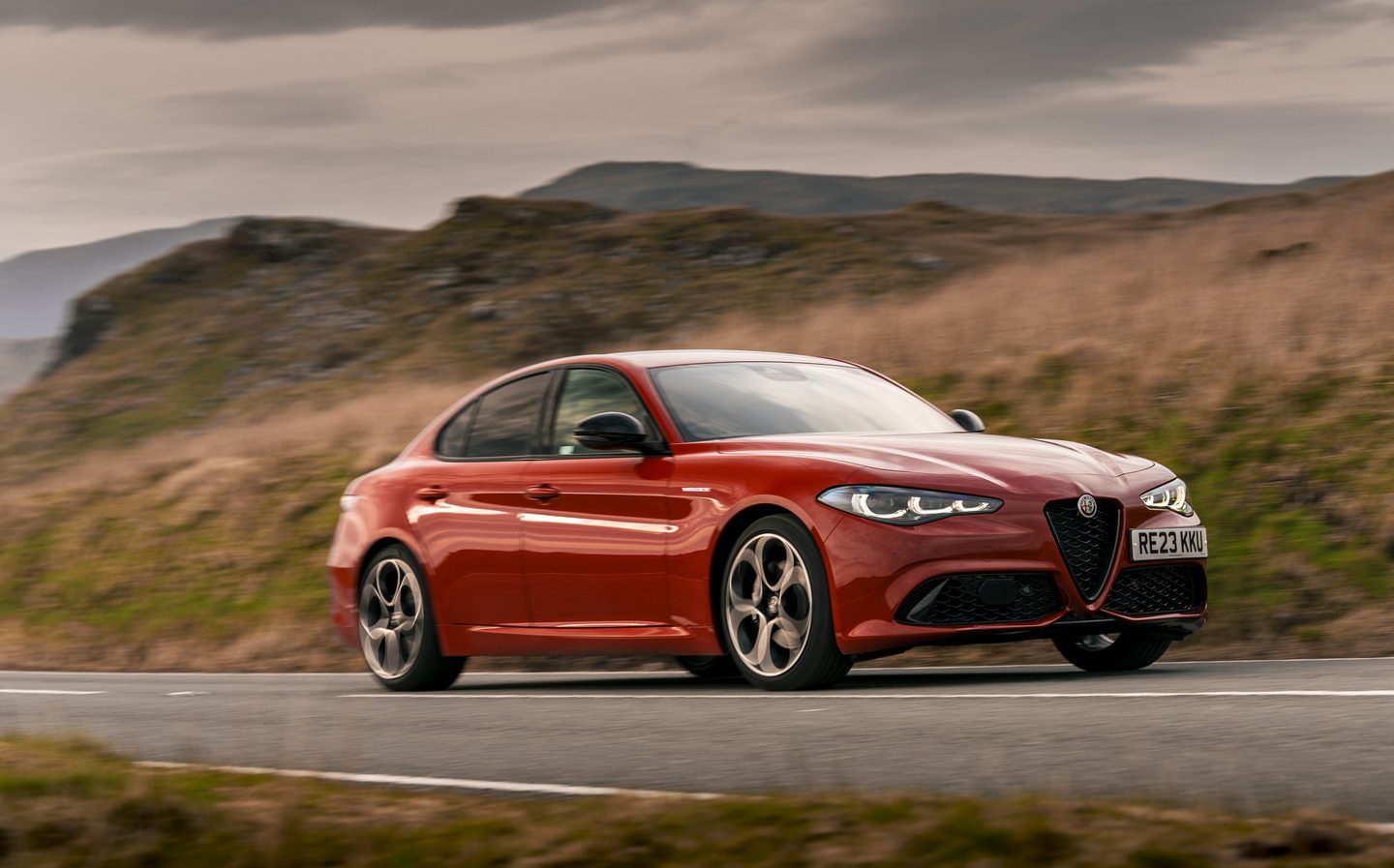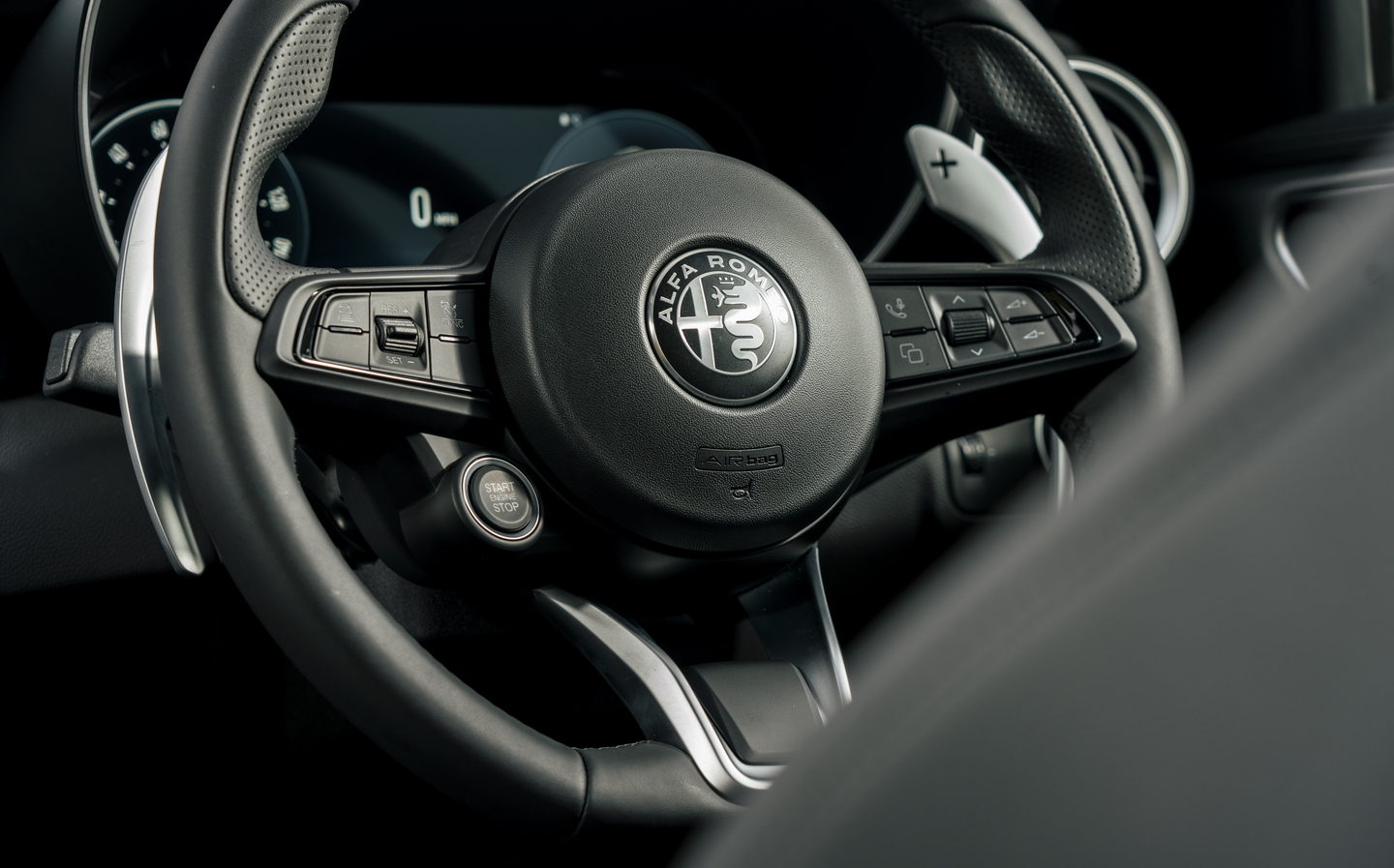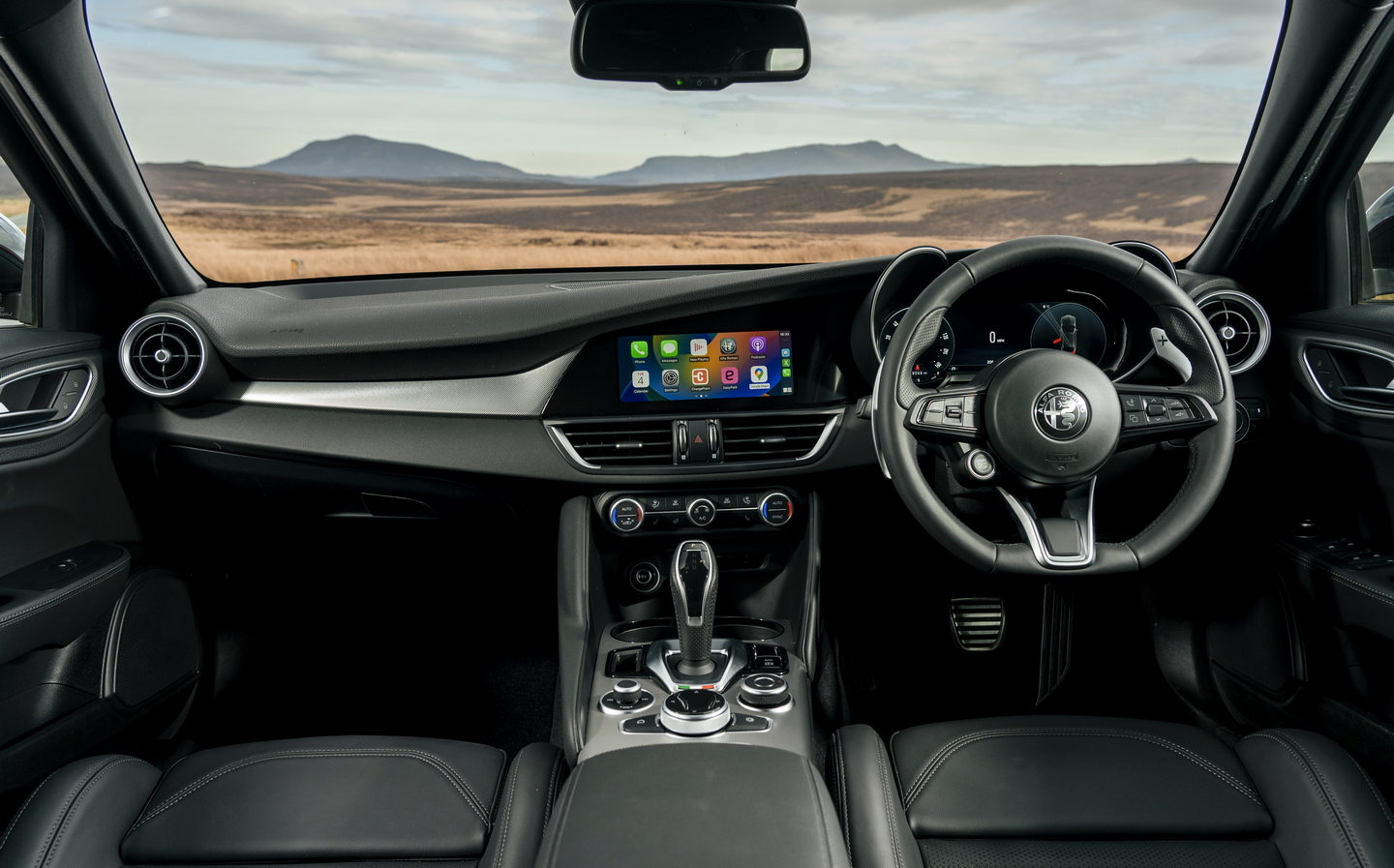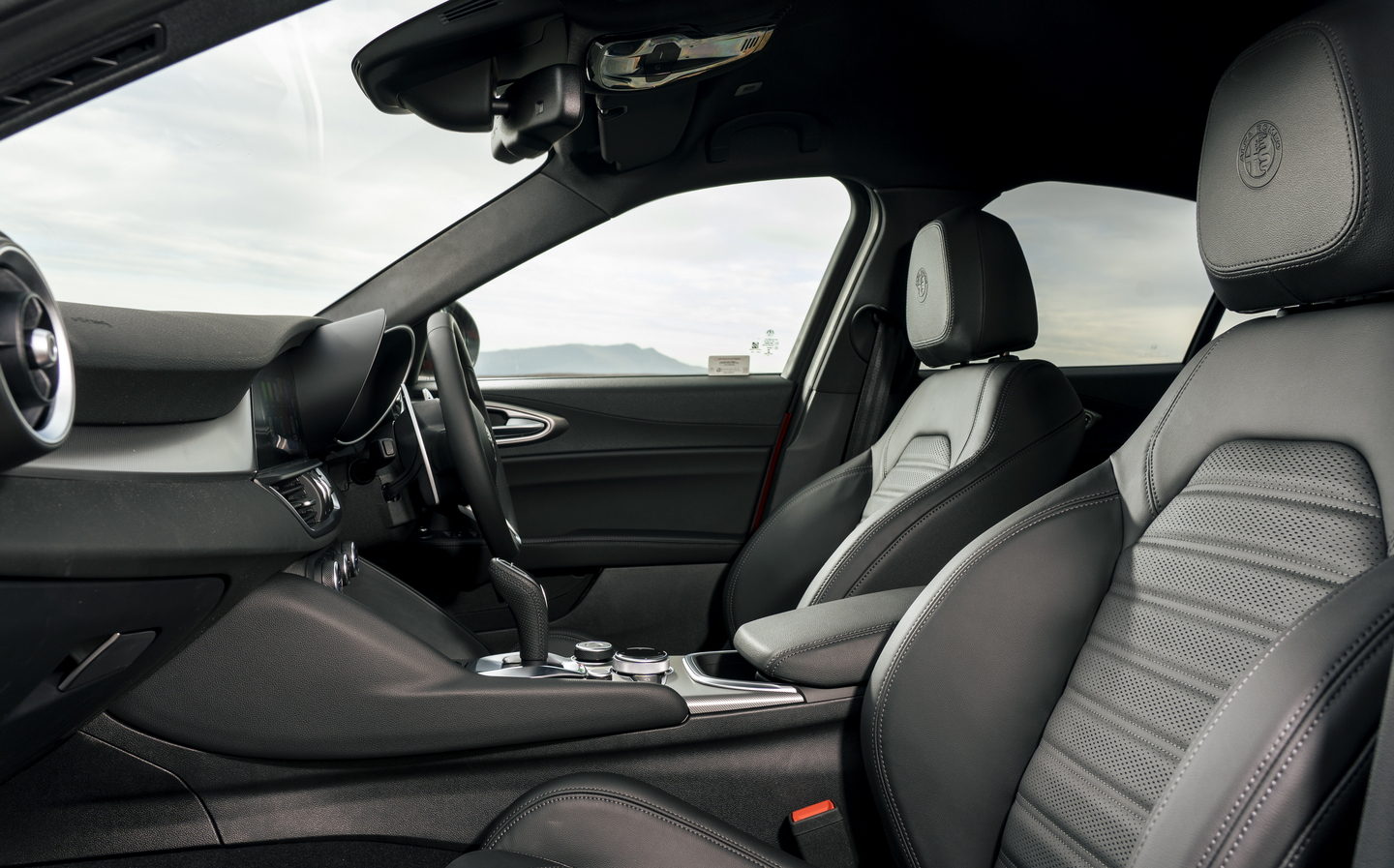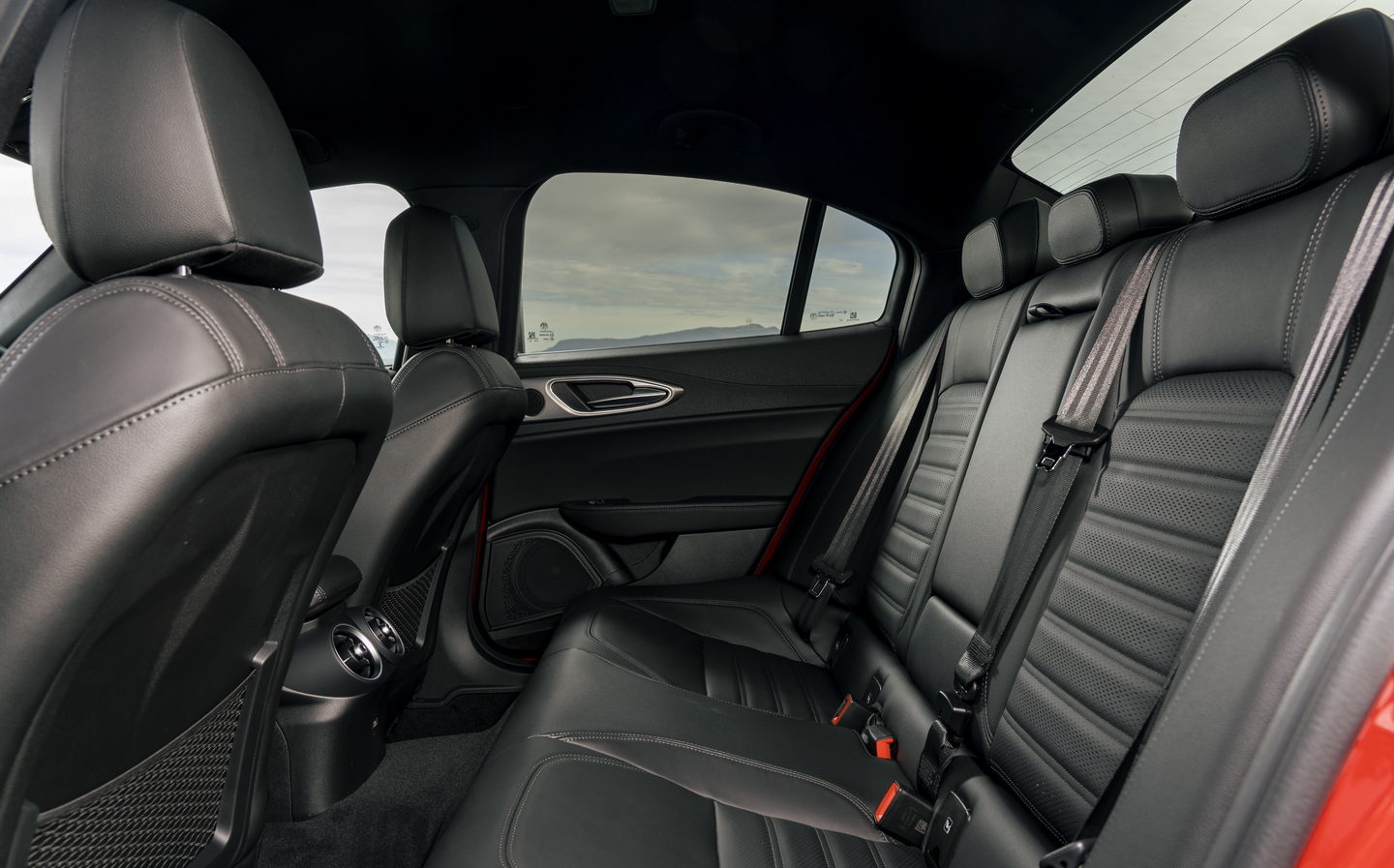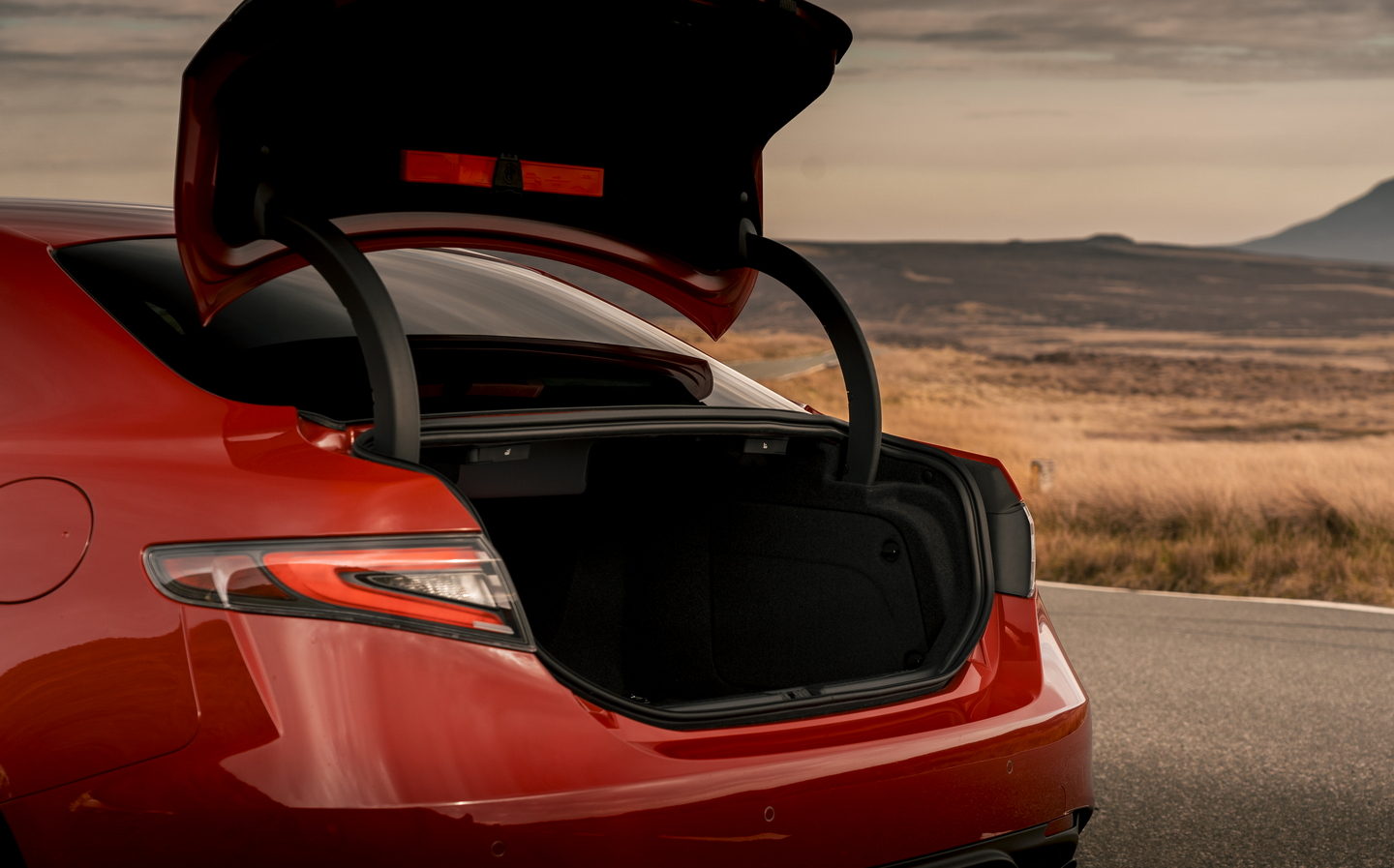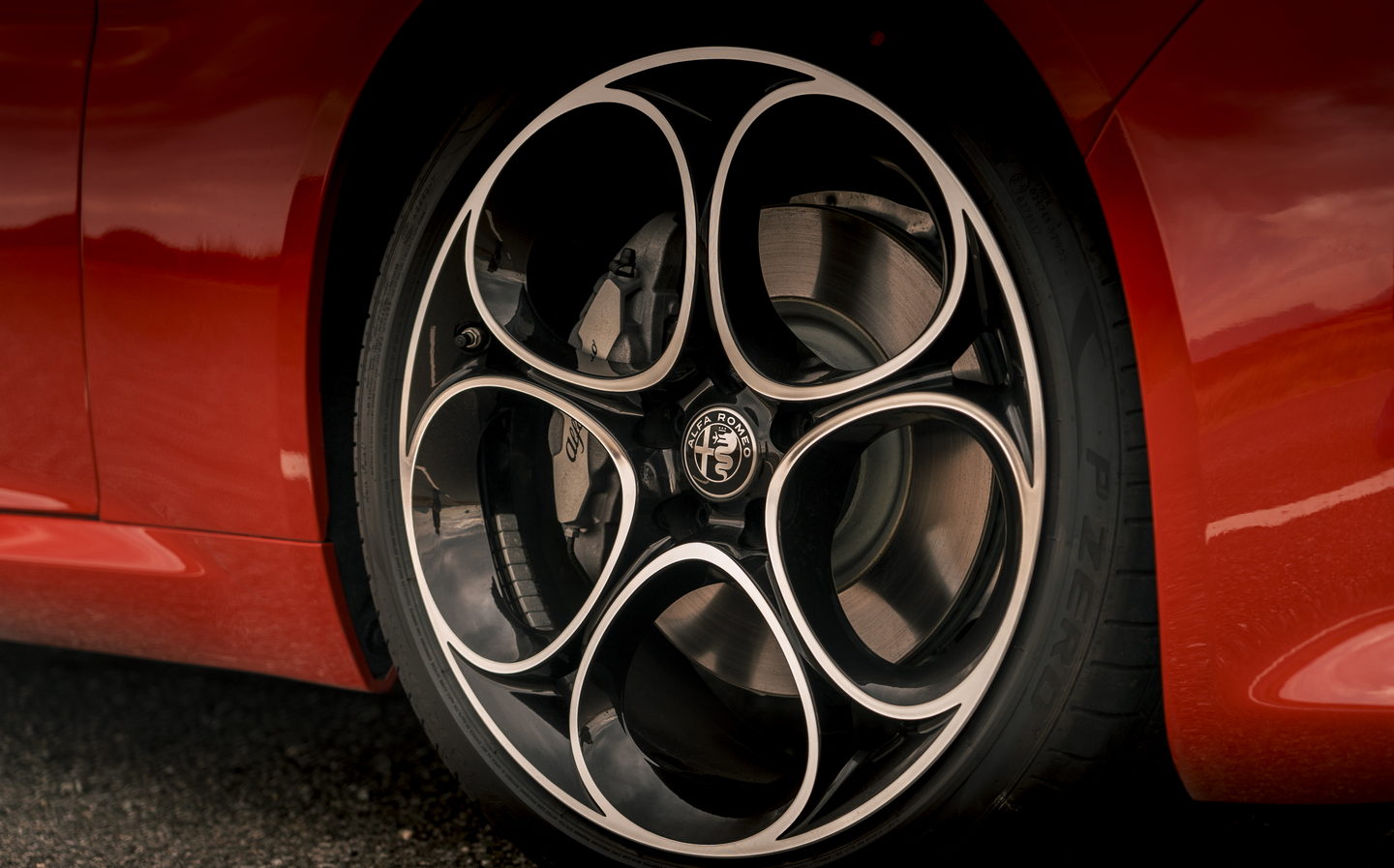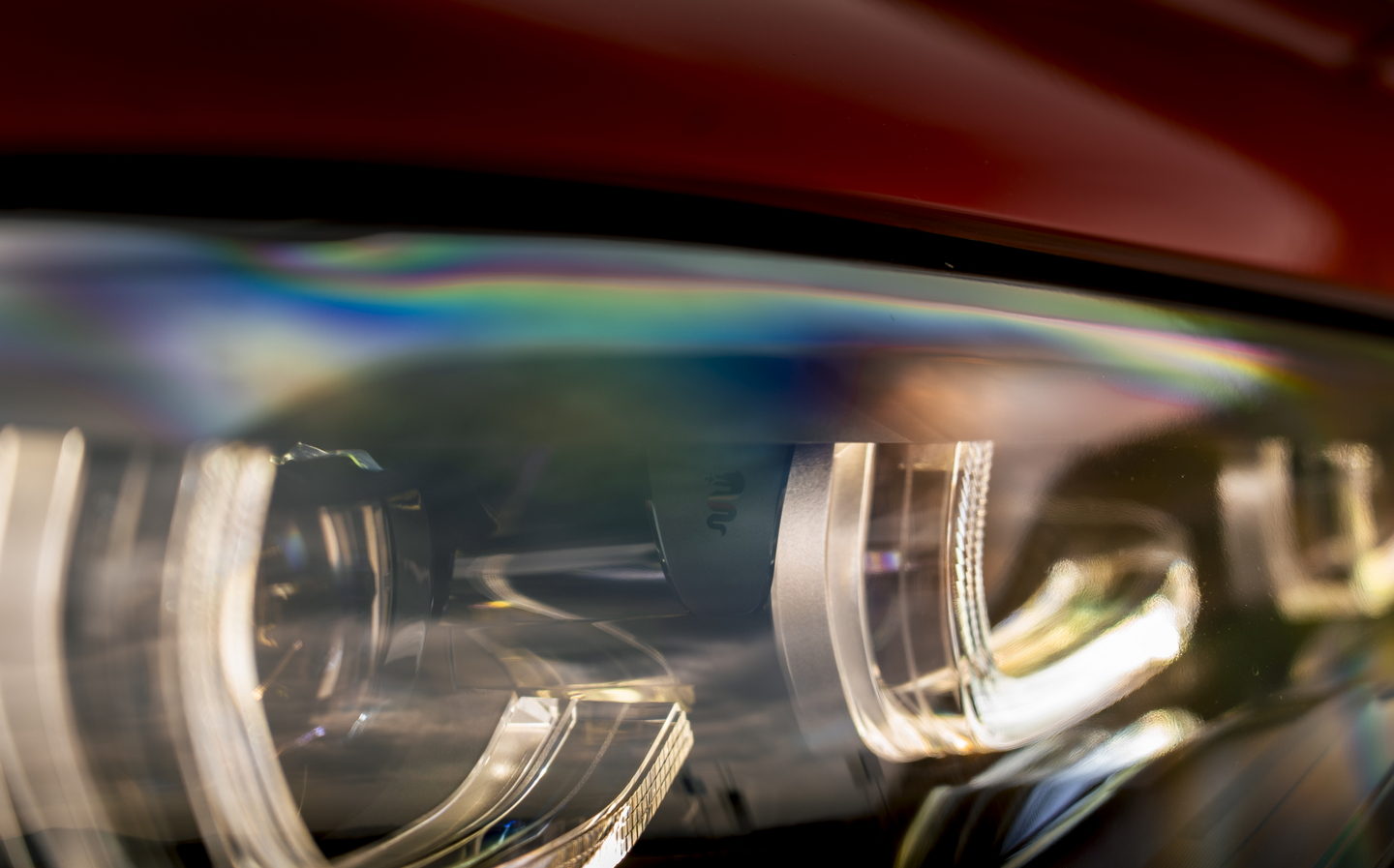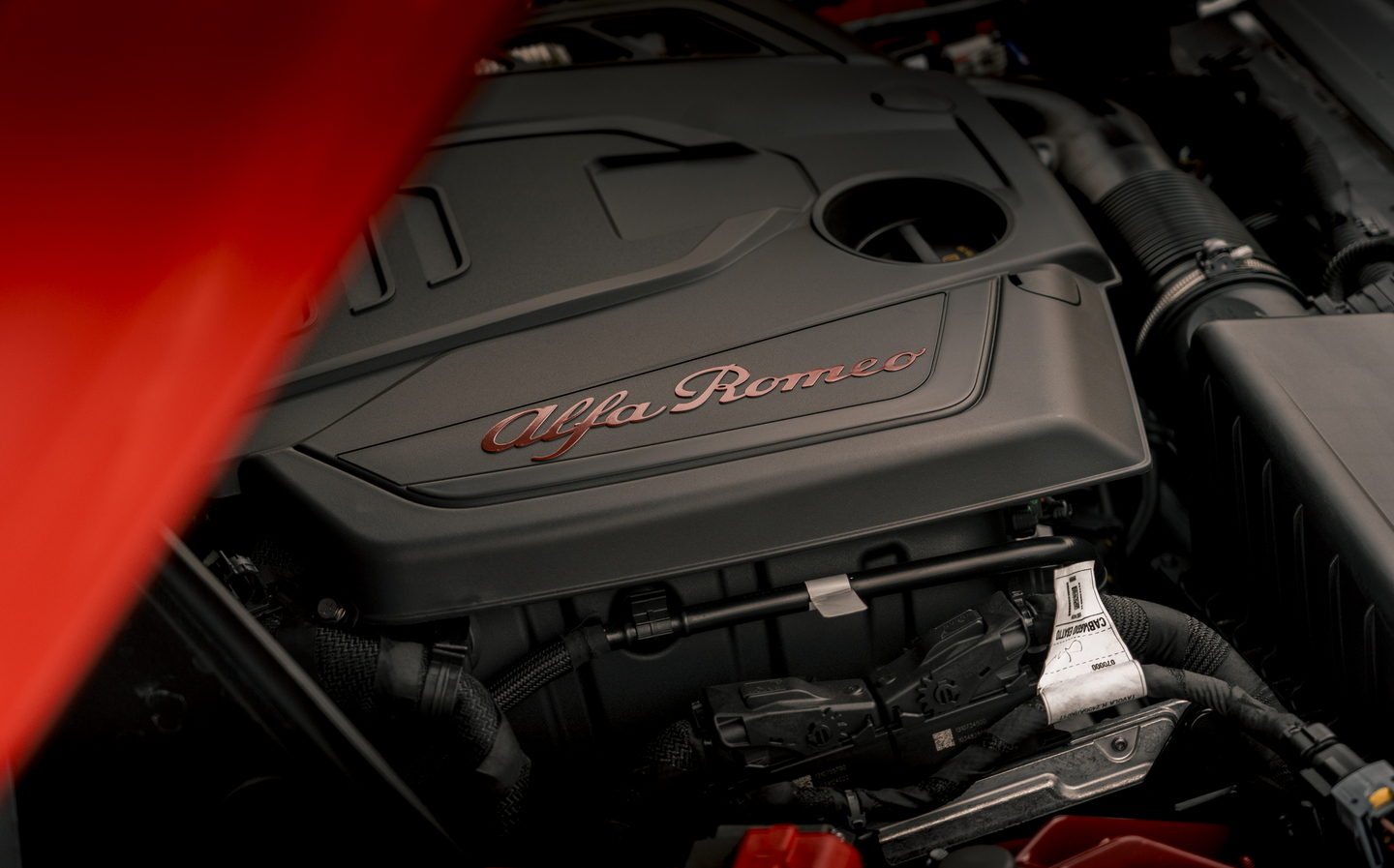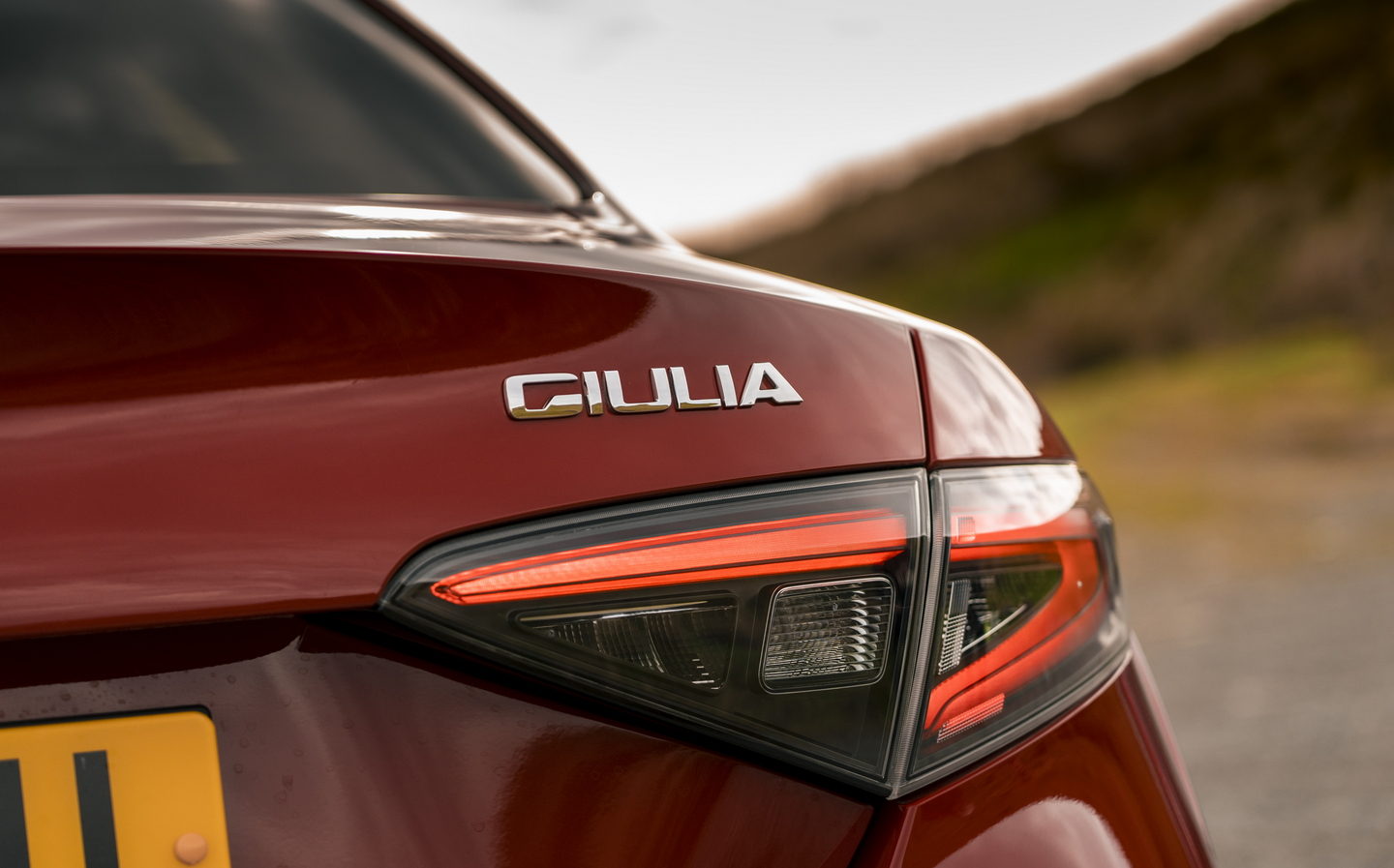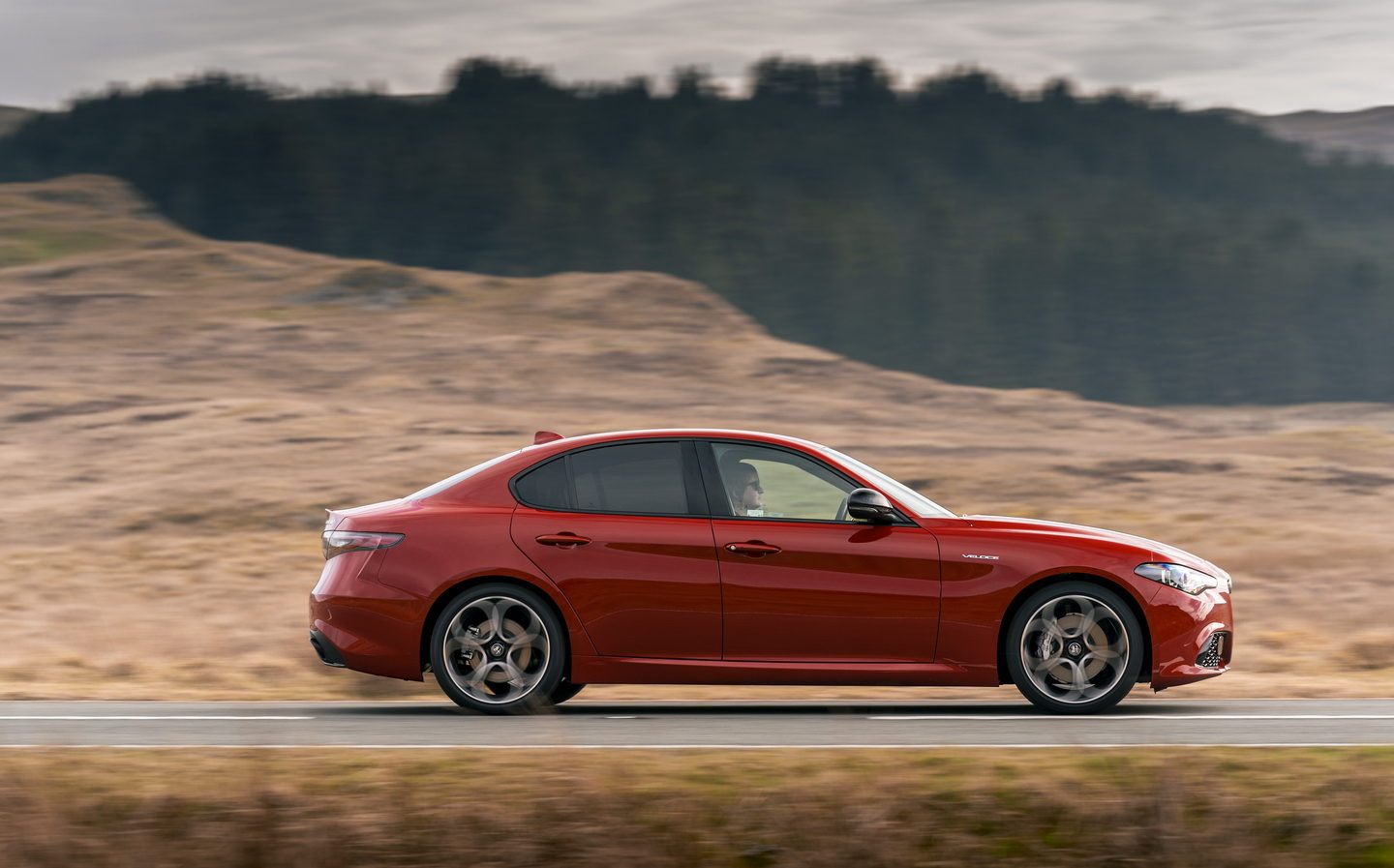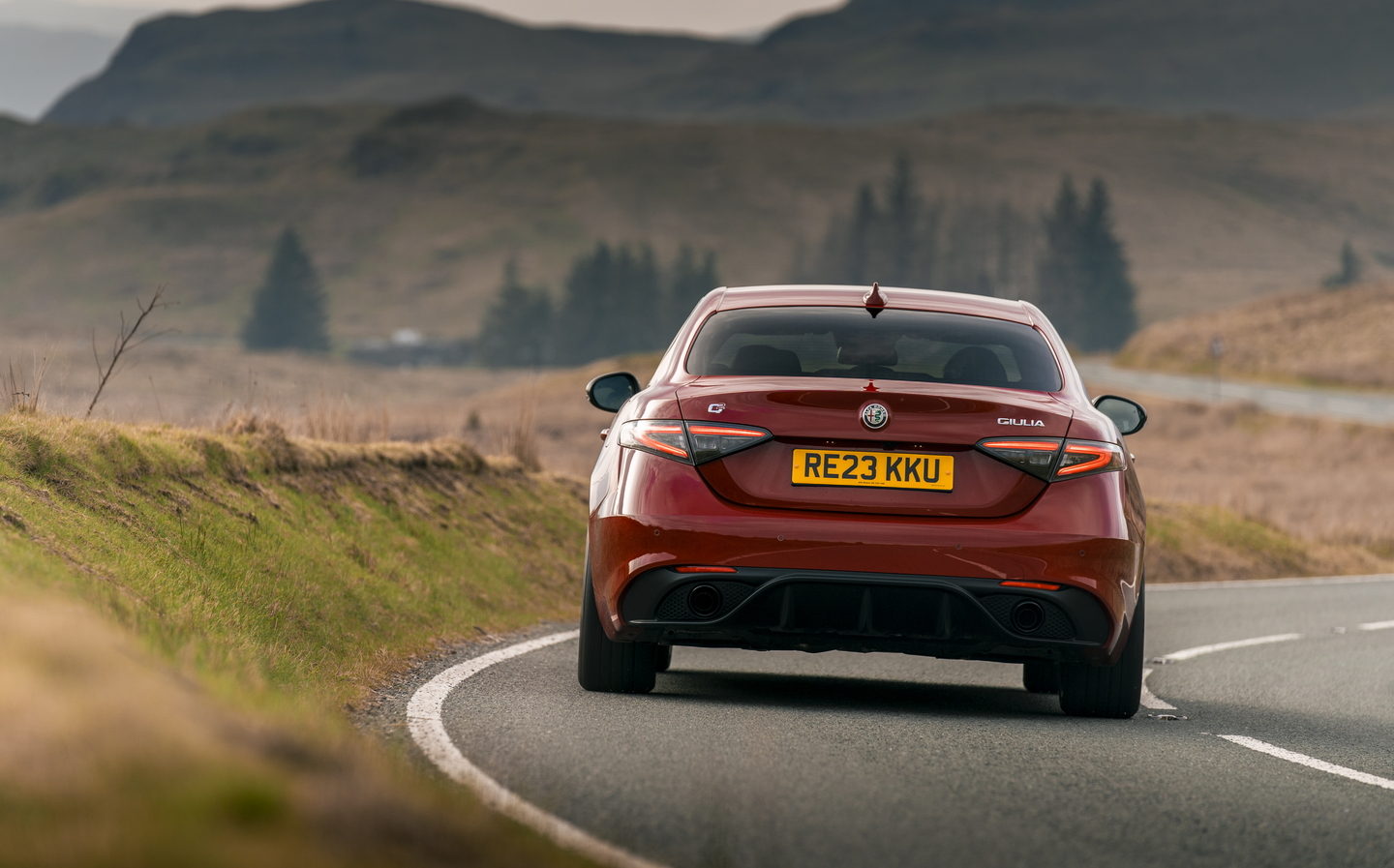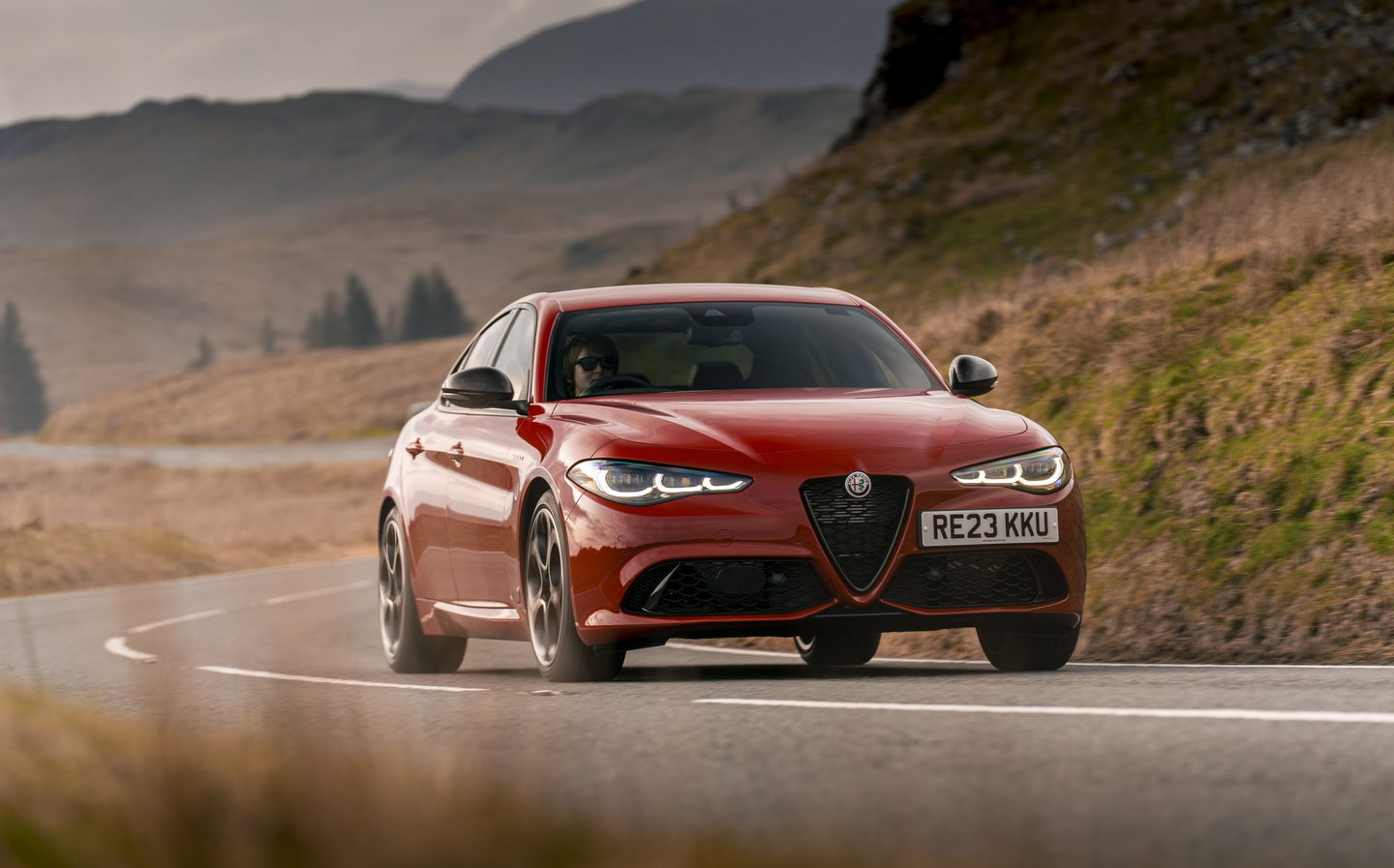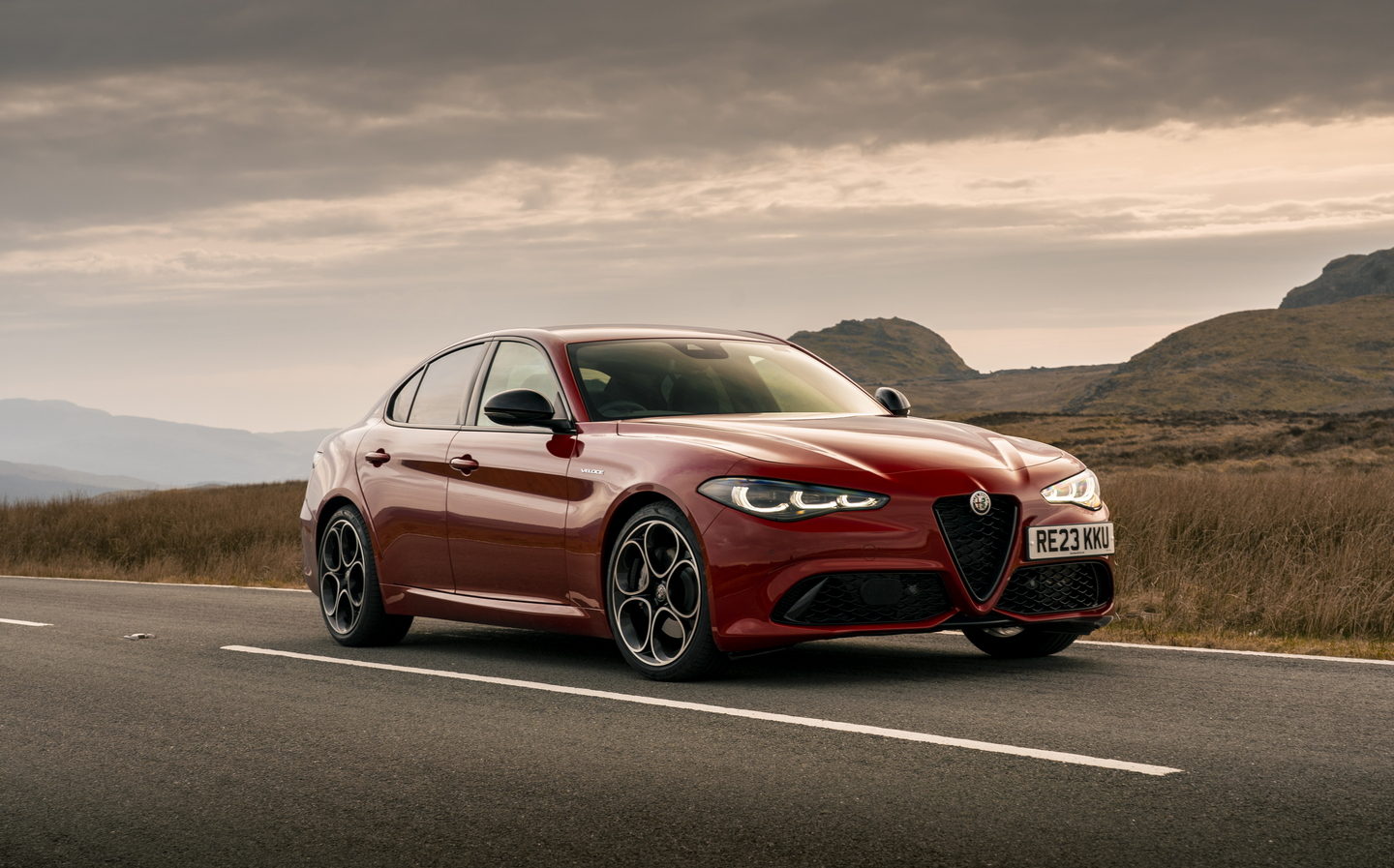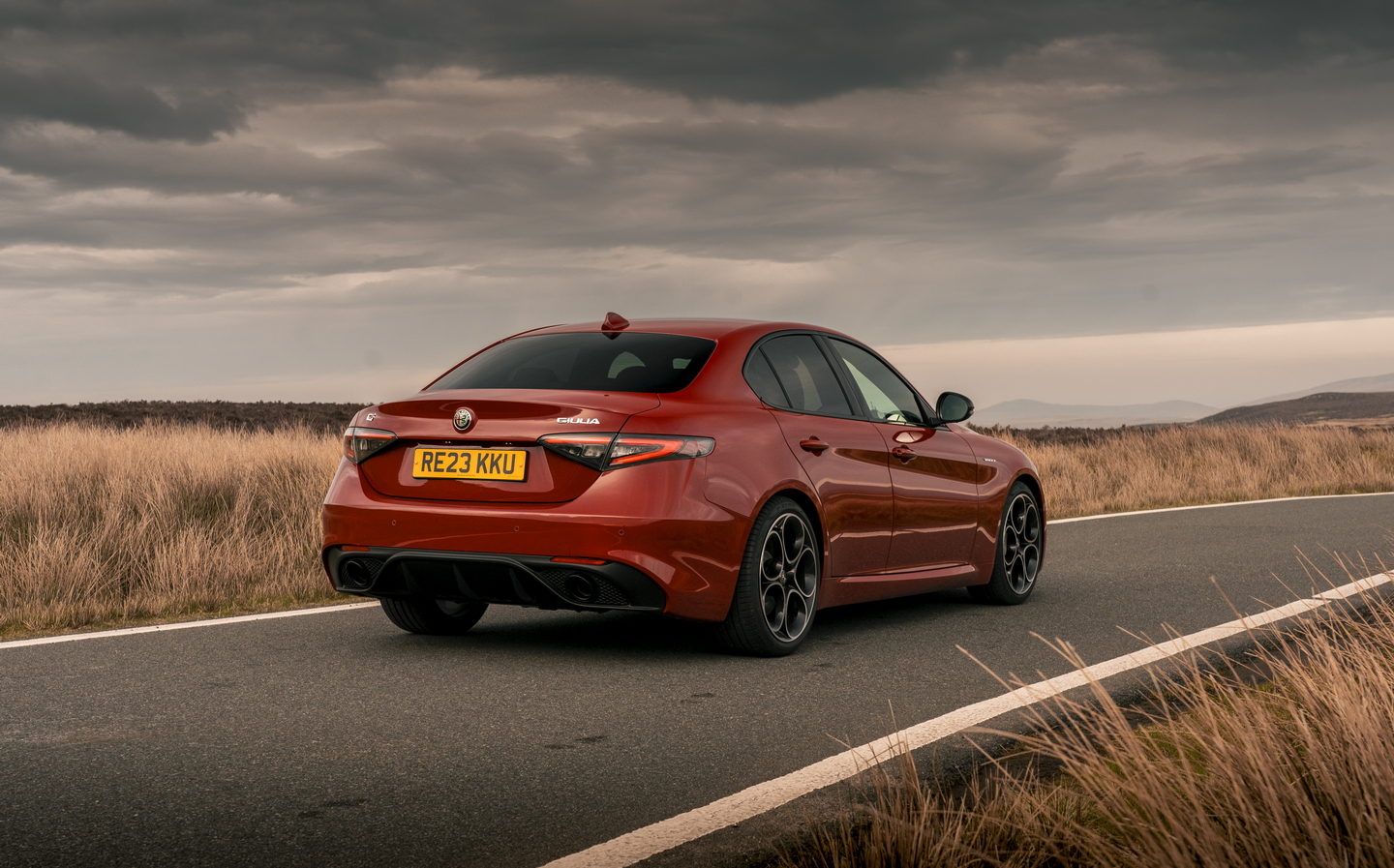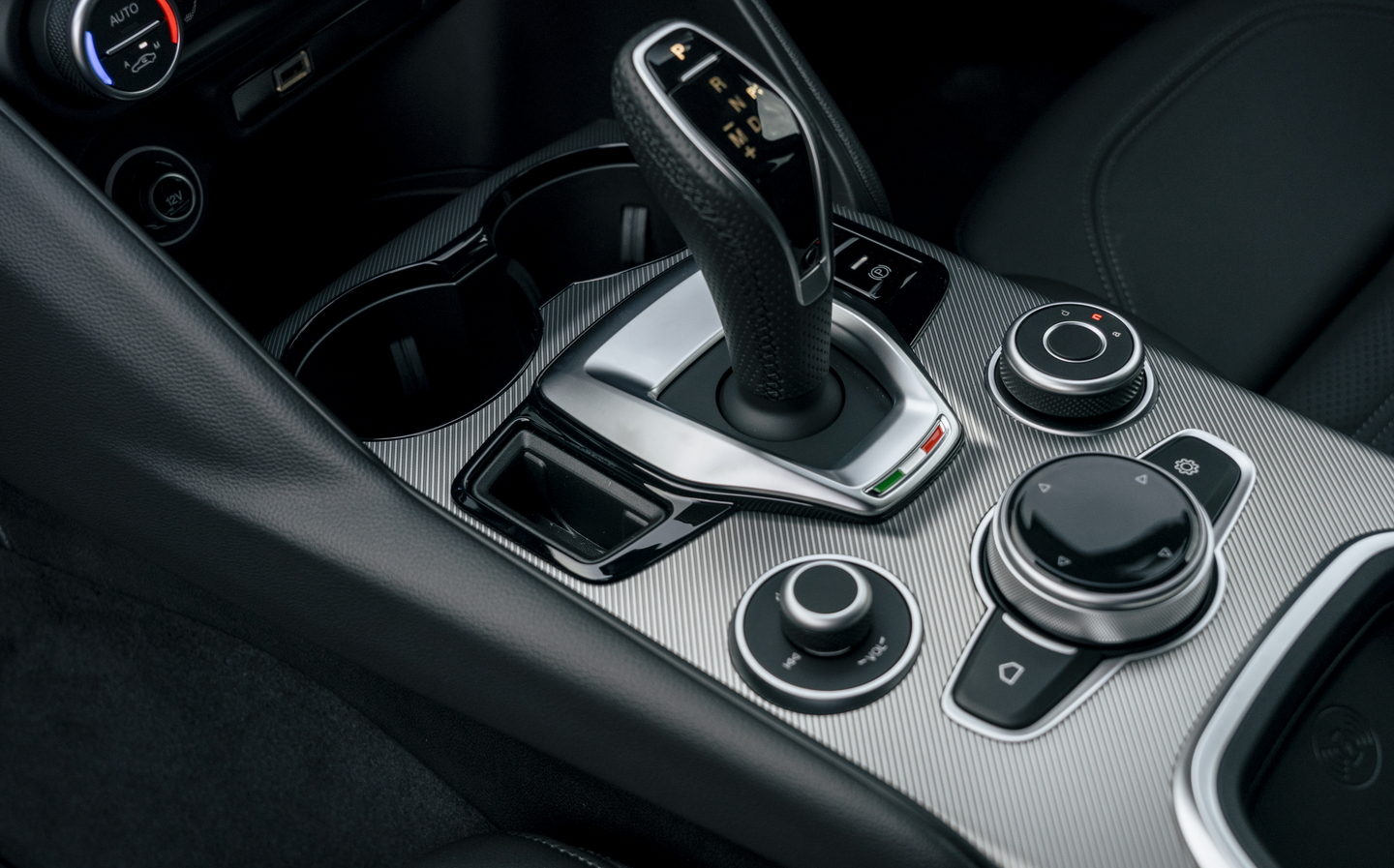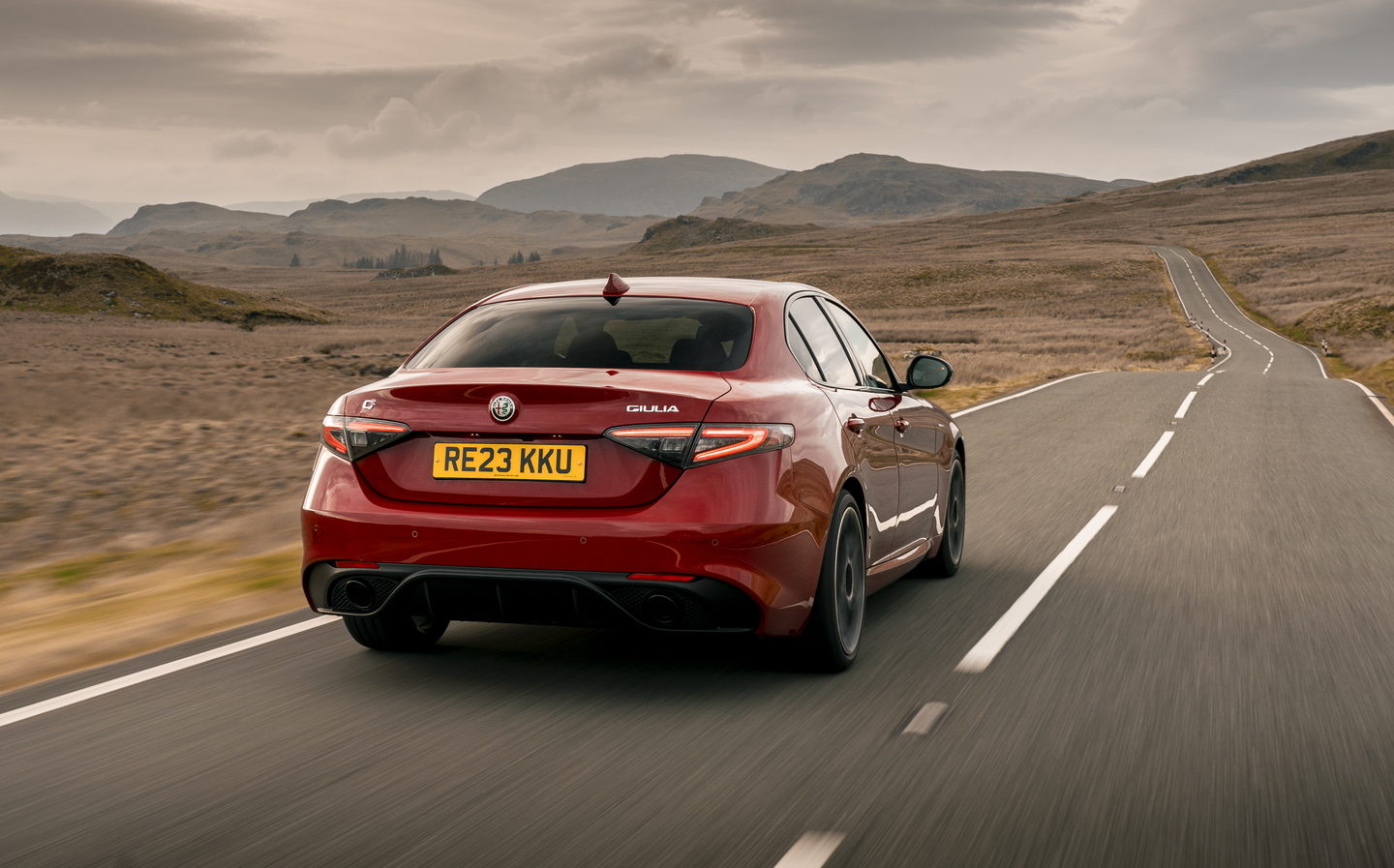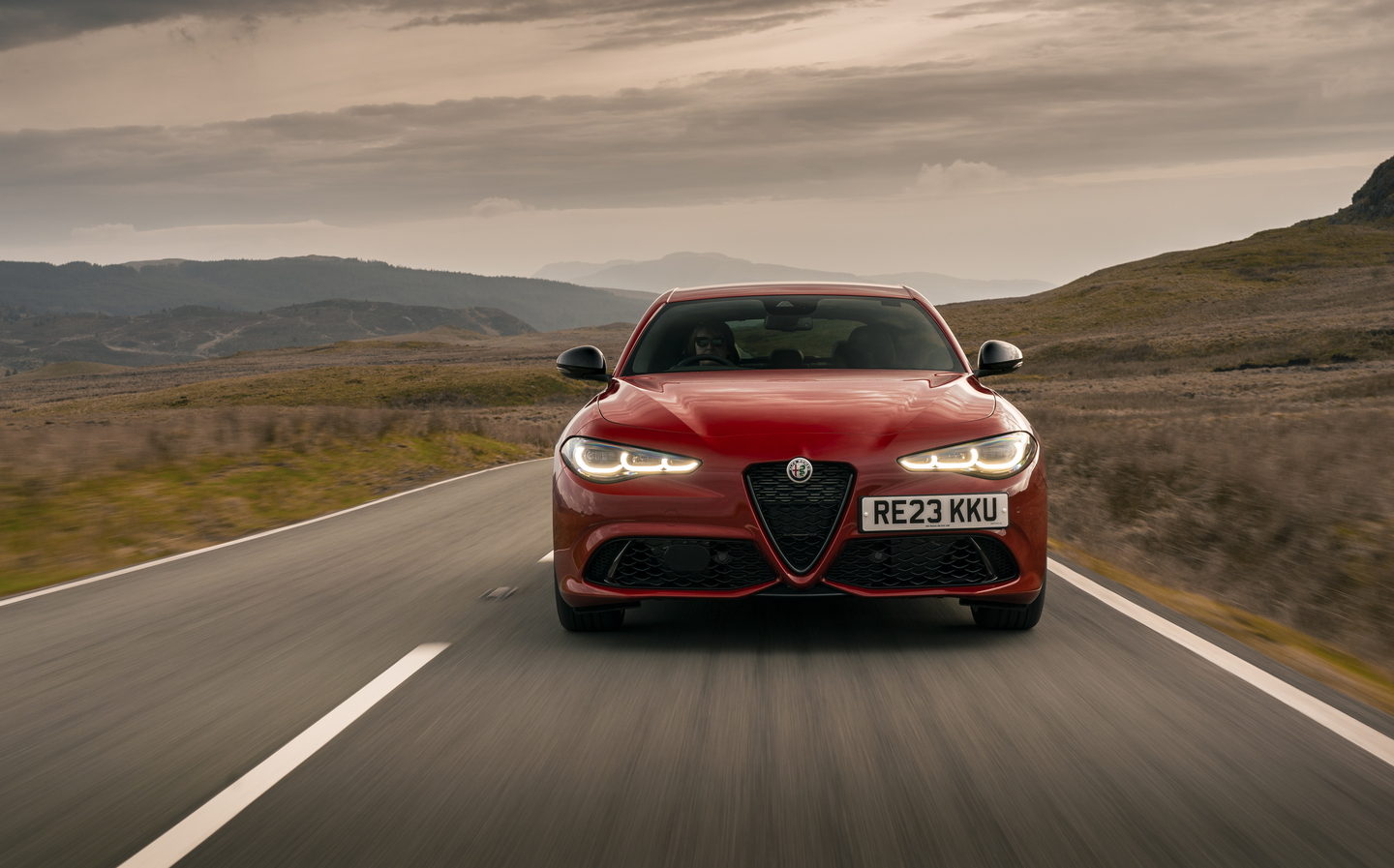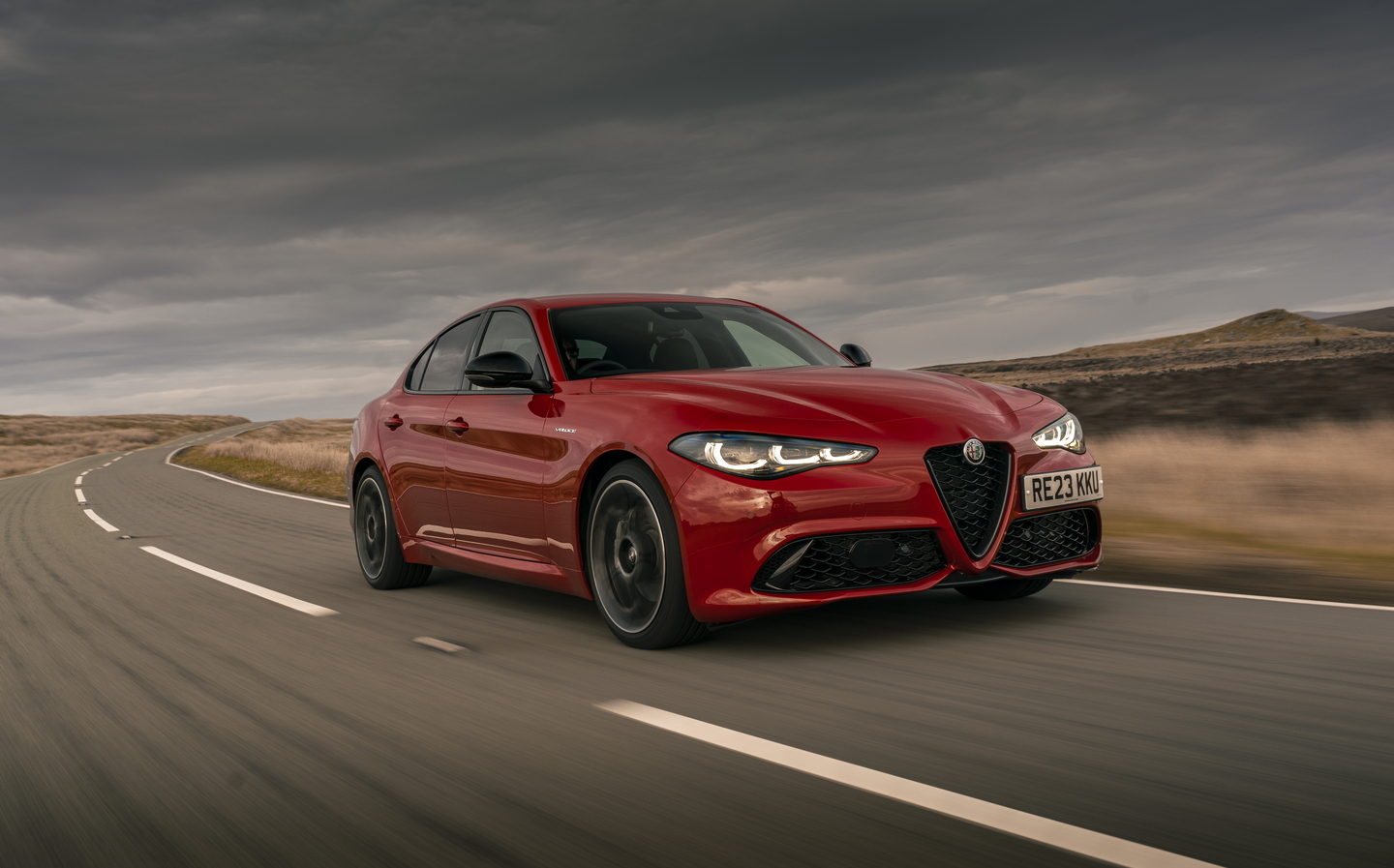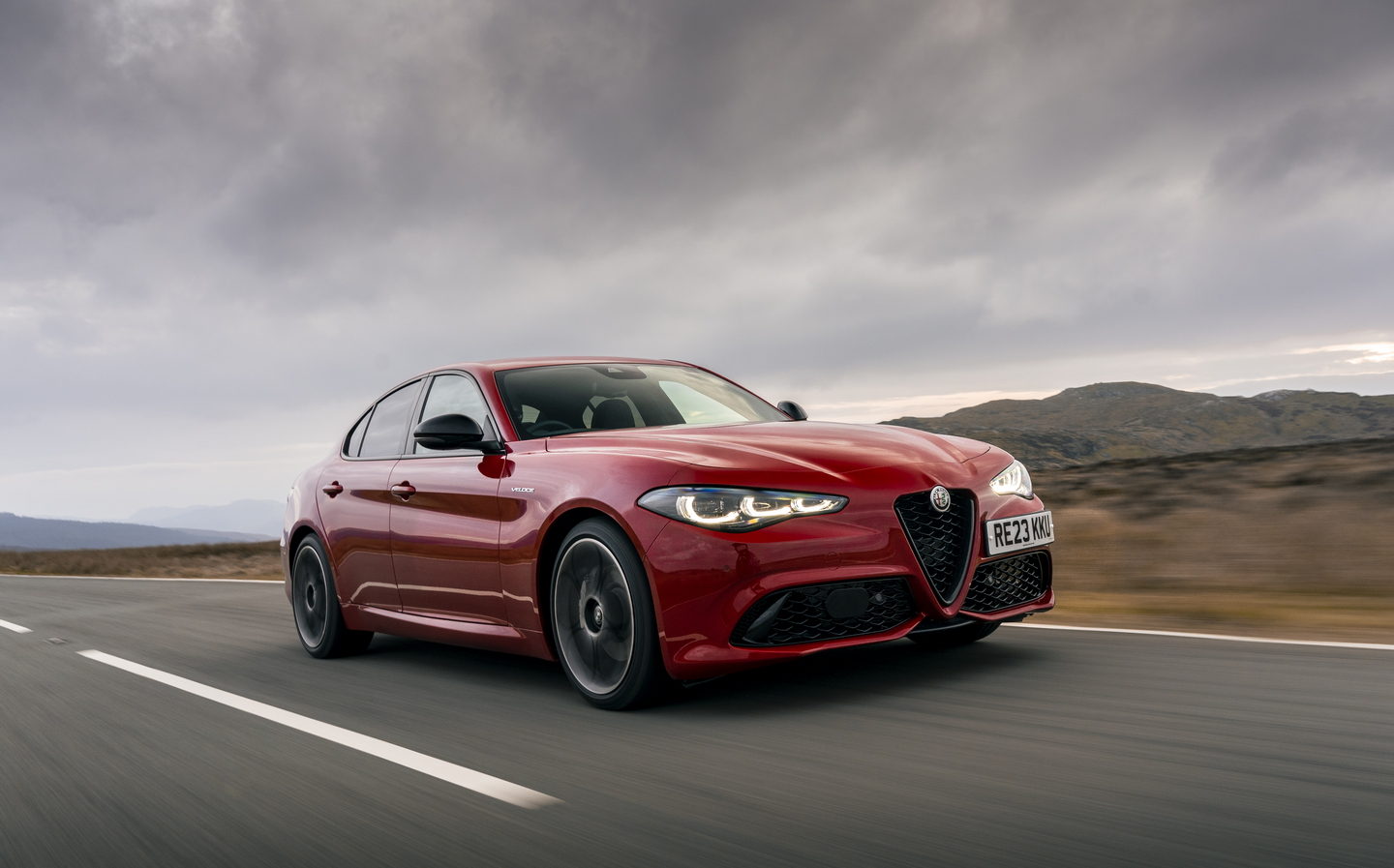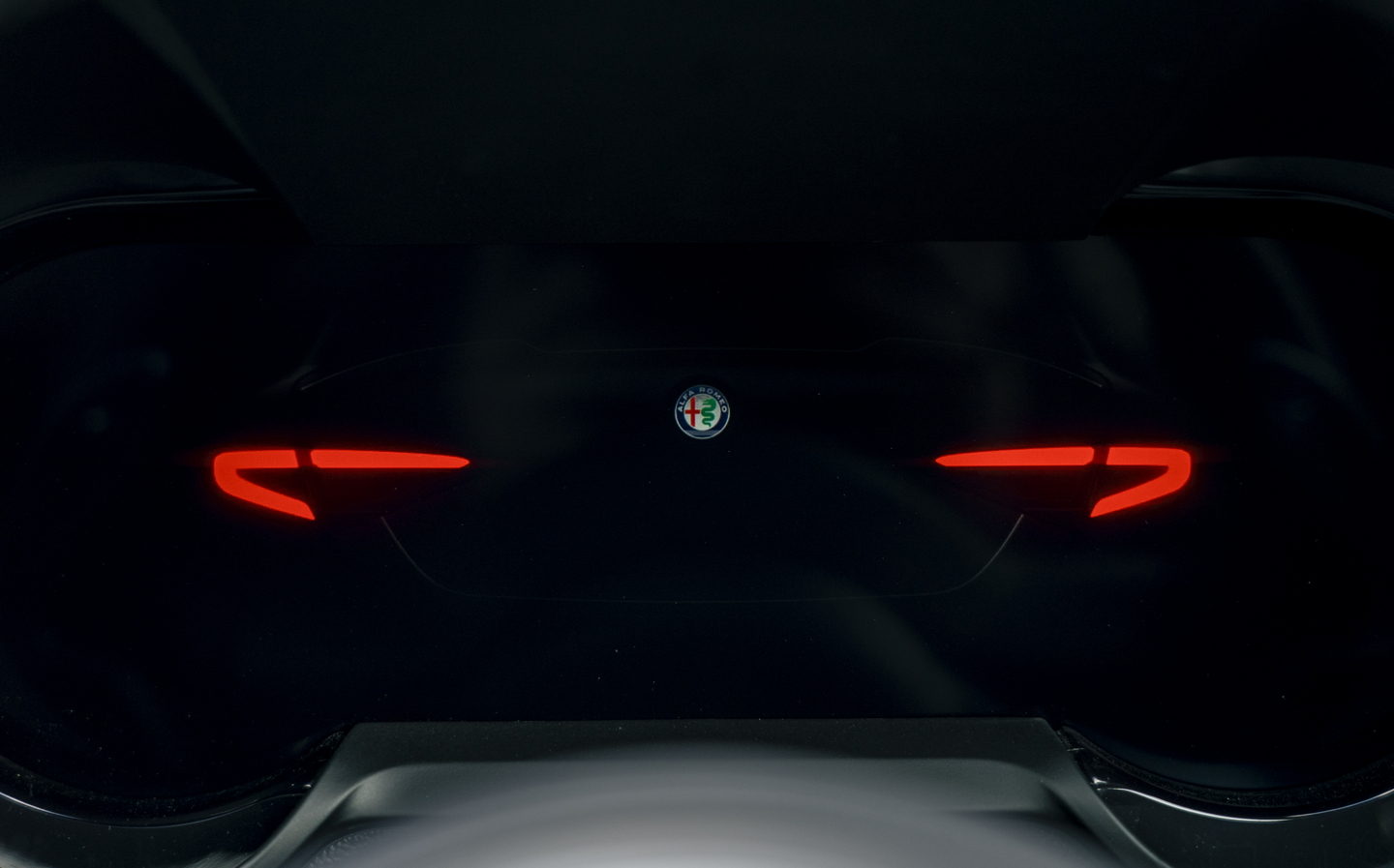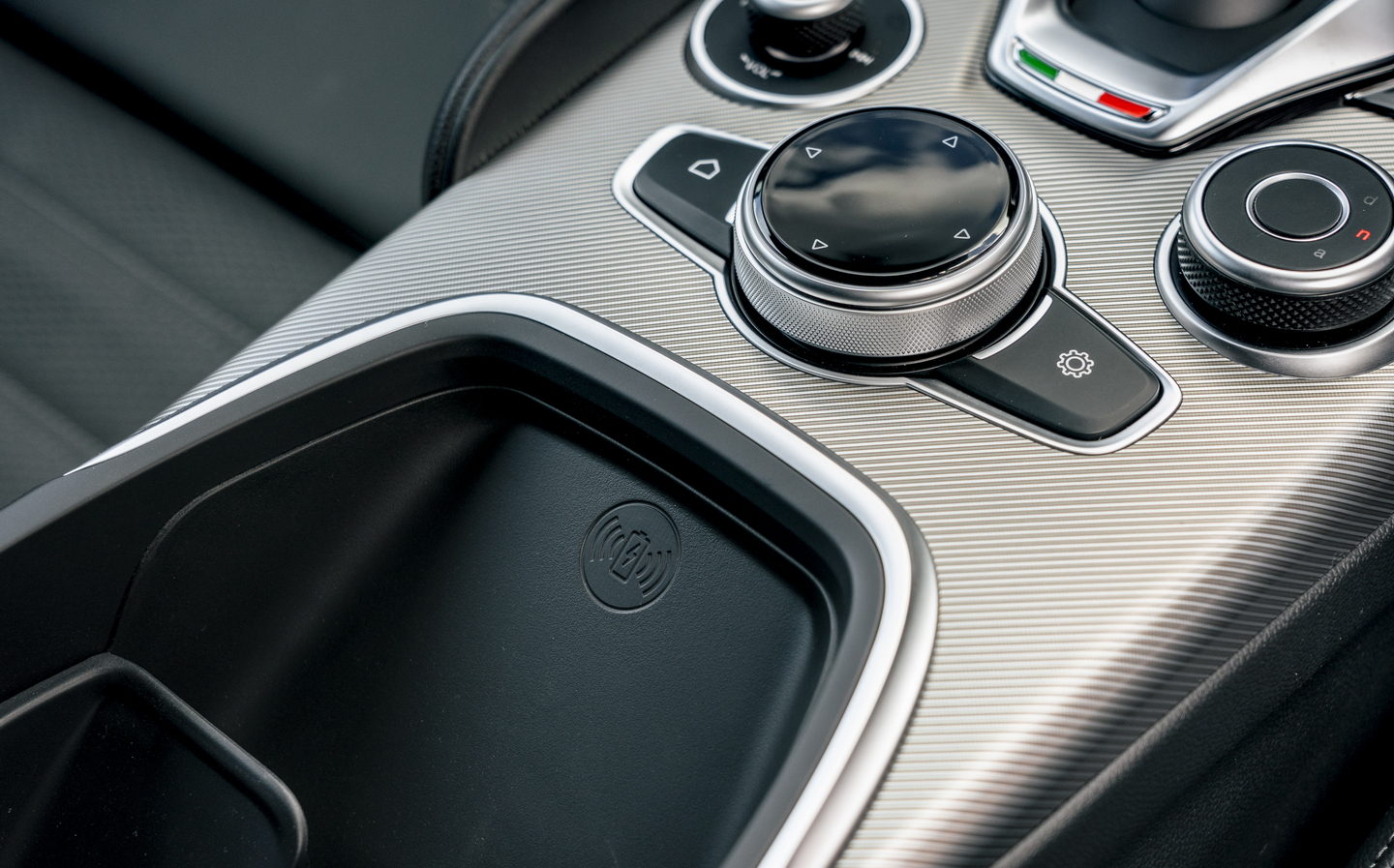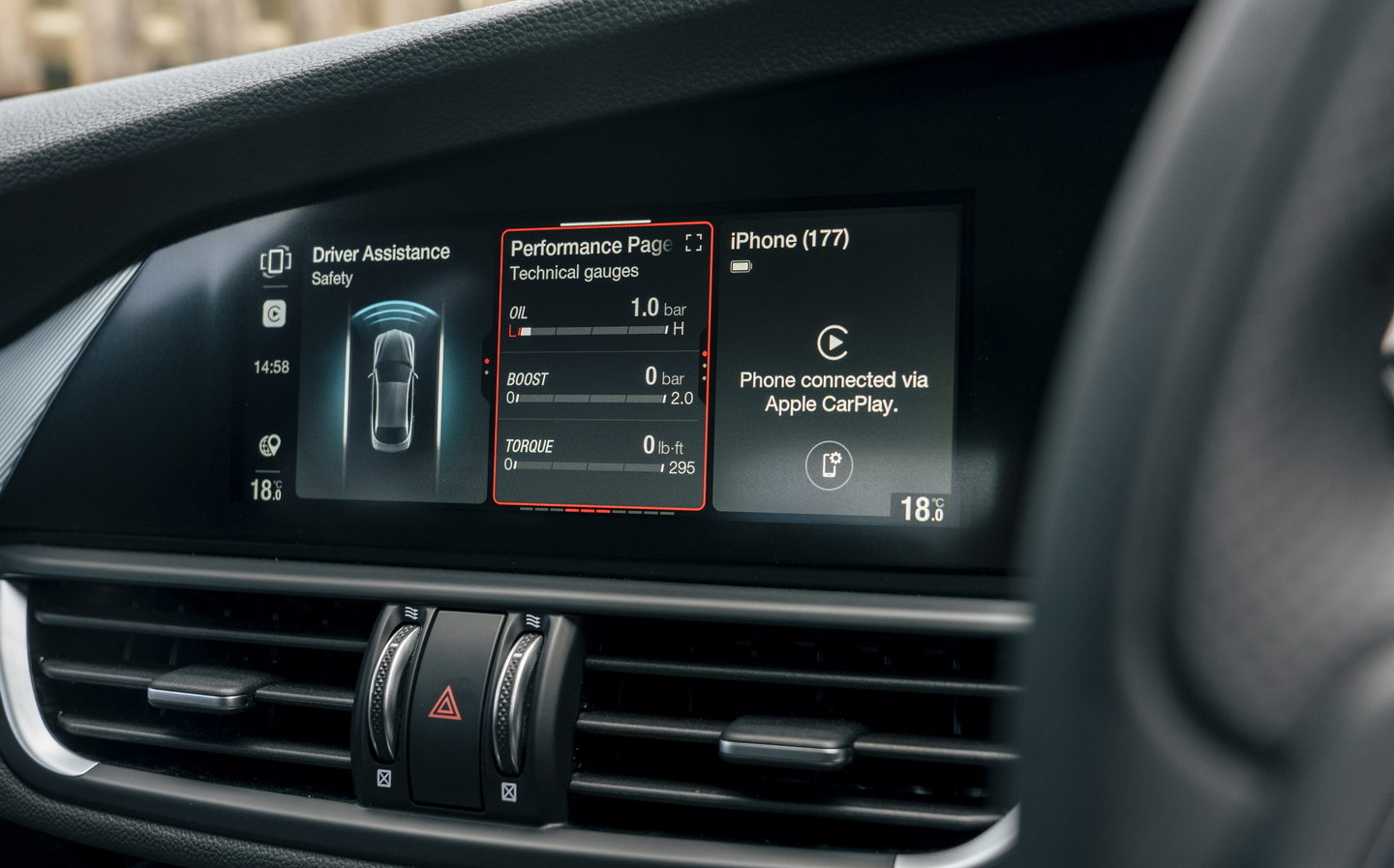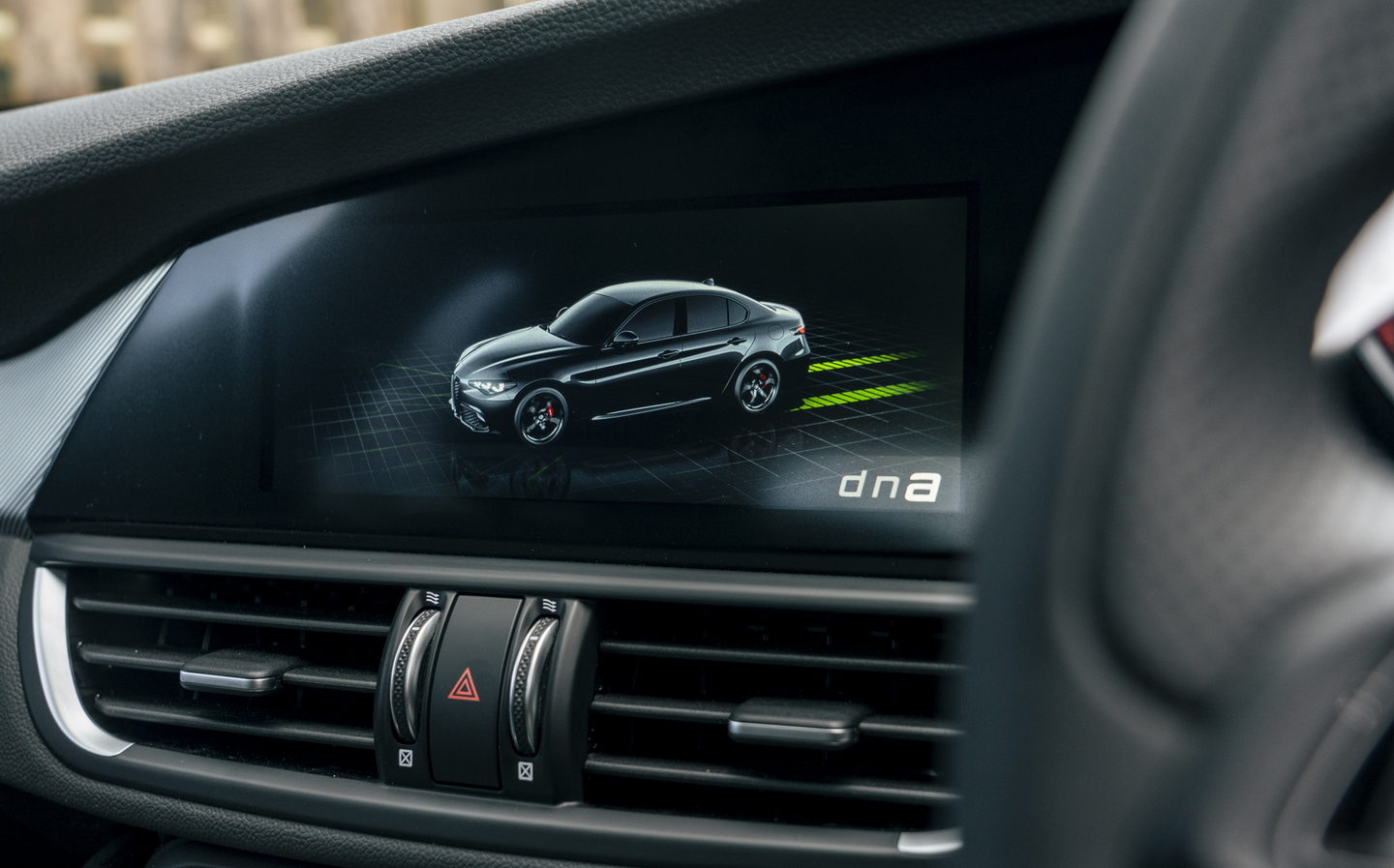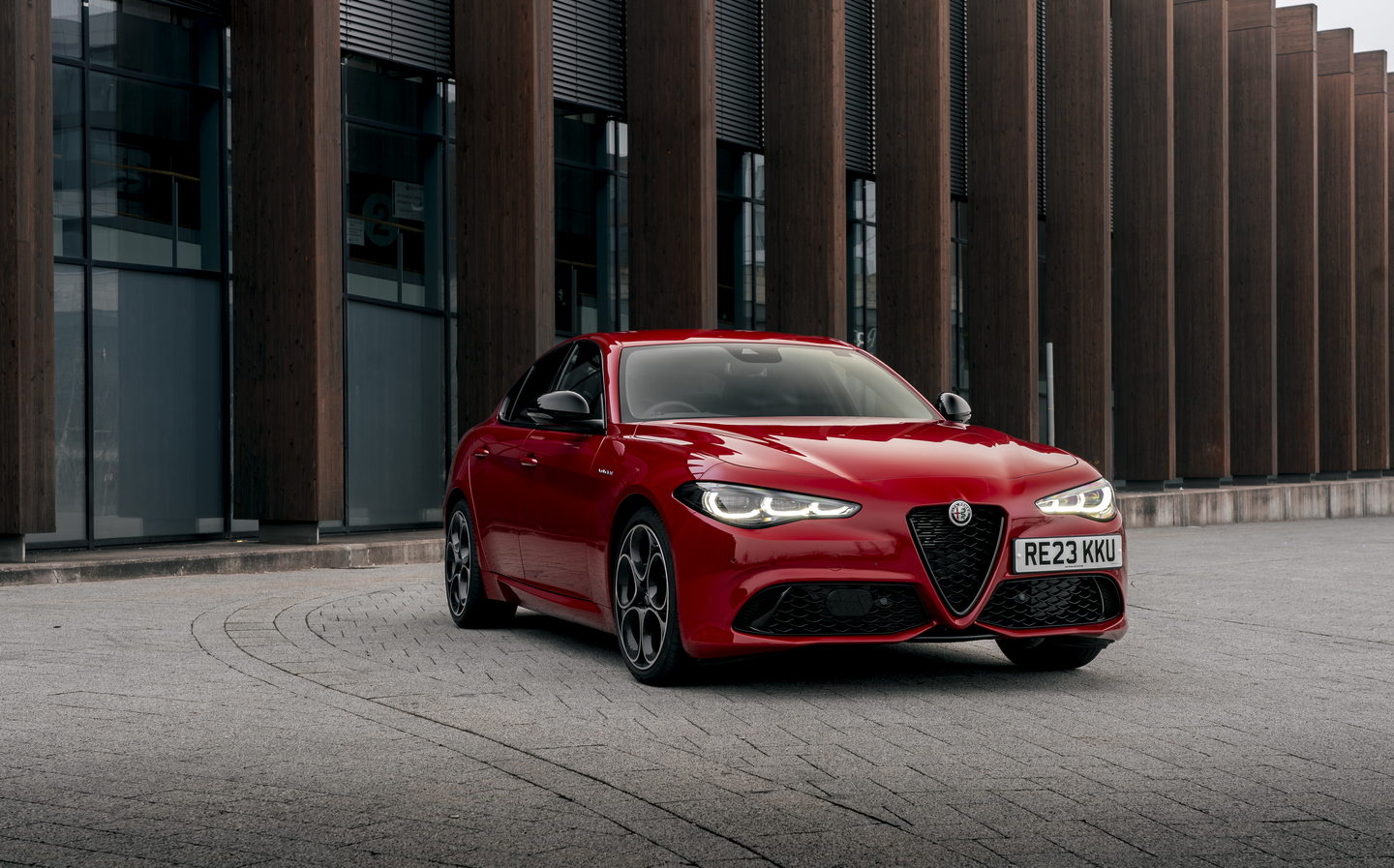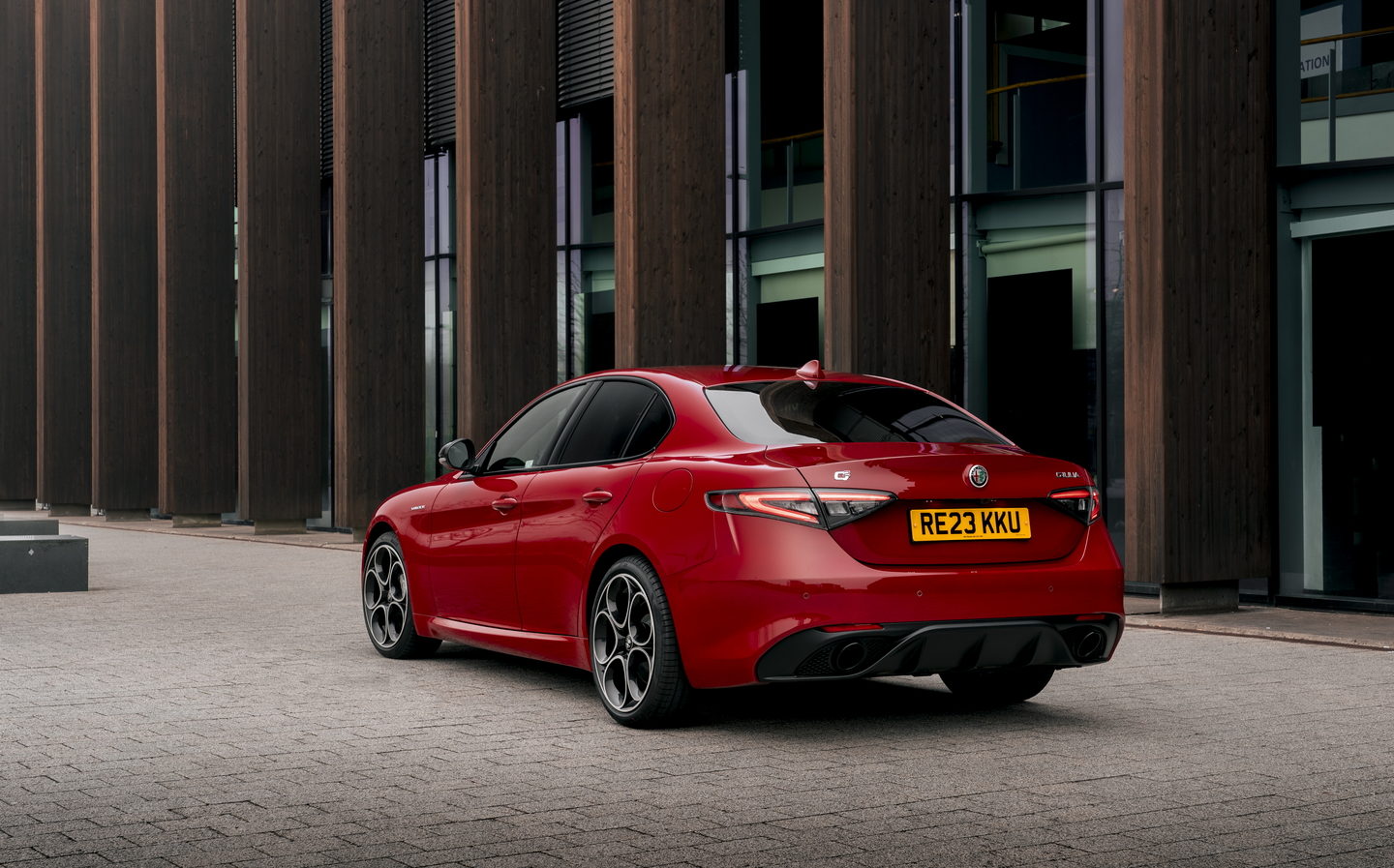Alfa Romeo Giulia 2023 review: More than just a pretty face?
Swoon...
The Alfa Romeo Giulia has long been one of those cars respected by many but bought by precious few. Beautiful on the outside but less than perfect inside, it has failed to capture the imaginations of buyers despite its handling and performance. Instead, customers have carried on flocking to the German alternatives, preferring the likes of the BMW 3 Series and Audi A4.
In a bid to woo a few more owners as the Giulia nears retirement, Alfa Romeo has treated the car to a few choice updates, tweaking the styling here and updating the interior there.
Even the most ardent Alfa fan must surely admit it’s a mild revamp, rather than a complete overhaul, but will it be enough to inch closer to its numerous German rivals, or will it remain a long way short of the class leaders?
Exterior design and rivals
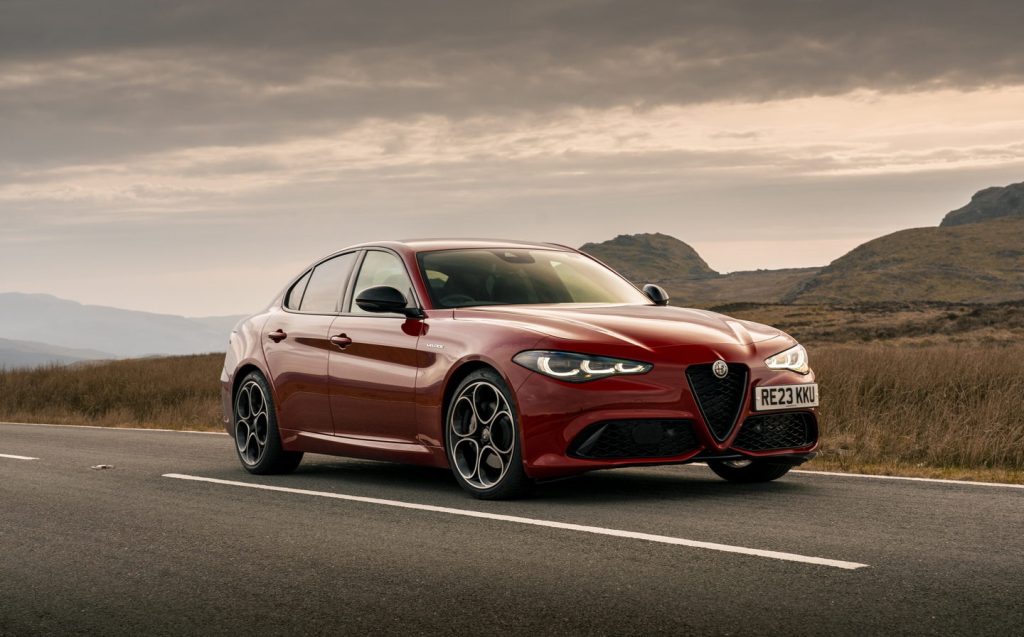
The Giulia’s bodywork has not changed much as part of this update – in fact, it’s hard to spot the difference at first glance – but there are a few tweaks of note.
The most obvious change is to the headlight clusters, which now inherit the ‘3+3’ design seen in Alfas of old and the latest Tonale SUV. But they’re more than just a pretty upgrade. They bring new technology with them, including a system that constantly adjusts the dipped beam of the lights depending on the road conditions and speed.
Elsewhere, Alfa Romeo’s designers have also taken the opportunity to tweak the nose of the Giulia, lightly revamping the triangular grille and the lower air vents in the front bumper. There are changes to the rear lights, too, with smoked lenses now fitted at the rear of the car.
But despite the relative lack of major changes, the Giulia is still among the best-looking cars in its class. The Audi A4, Mercedes-Benz C-Class and BMW 3 Series are hardly ugly, but the Giulia wipes the floor with all of them. It might be an older design than some but there’s something exceptionally beautiful about the lines and proportions.
Interior and practicality
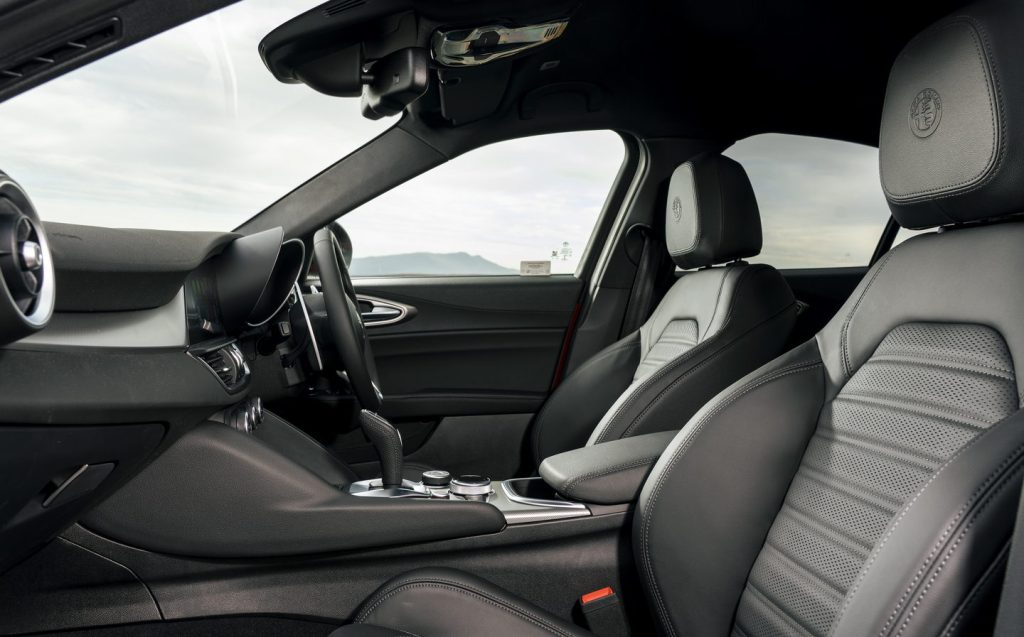
The Giulia’s interior was once its Achilles heel, but the mid-life update a few years ago put all that right – at least to some extent. In isolation, the Giulia’s cabin looks fairly good, and there are some lovely design touches and material choices in there. The straight black interior looks a bit bland, but adding a splash of colour with brighter leather soon livens things up a bit.
Better still, Alfa’s mid-life updates gave the Giulia’s cabin the quality to go with its design. Of course, it isn’t problem-free – there are some questionable plastics knocking about and some of the fit and finish isn’t ideal – but it’s such a vast improvement on the original Giulia that we’re prepared to forgive it a little.
Nevertheless, when the Giulia’s interior is compared with the likes of the Audi A4 and the BMW 3 Series, it begins to look a little less impressive. Perhaps that says more about the German cars than the Alfa, but the Giulia is markedly less solid and less modern than its competitors. The recessed touchscreen and the plasticky rotary controls on the centre console just feel slightly old now.
That said, at least the Alfa has retained some physical switchgear. Where other brands have hidden the climate control deep in the menus of touchscreens, Alfa has stuck with proper switches for the air conditioning and there’s even a rotary controller for the touchscreen. It’s much better than faffing about with distracting screens, but it’s a shame the switchgear doesn’t feel all that upmarket.
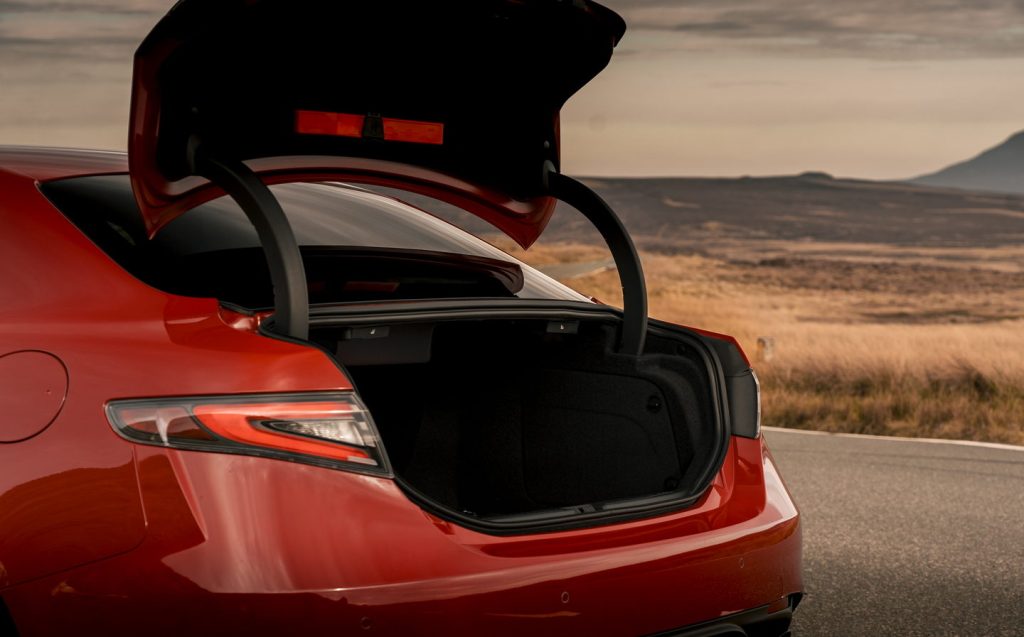
But while quality may remain an issue for the Giulia, practicality most certainly does not. Although the dark roof lining makes the rear cabin look a bit smaller than it is, space is better than in many other saloons, with more than enough headroom for passengers, even if they’re tall. Legroom is sufficient, rather than spectacular, but the back of the Giulia is still a perfectly comfortable place to spend time.
And – on the off chance you’re a suitcase, rather than a human being – you’ll find the boot is equally roomy. At 480 litres, it’s exactly the same size as that of a BMW 3 Series, and that should be more than enough for customers. Admittedly, the shape of the body means the boot isn’t necessarily the ideal shape, and unlike the BMW, there’s no estate option, but it should still be spacious enough most of the time.
Technology and safety
If you’re wondering what happened to the promised interior upgrades found on the new Giulia, fear not. One of the headline features is the new digital instrument cluster, which is essentially lifted from the Tonale SUV and is also found on the revamped Alfa Romeo Stelvio. With some neat features that nod to Alfa’s history, it manages to lift the interior a little and it’s a noticeable improvement on the old dials.
It’s easy to read and to use, and it comes with a choice of three different displays that allow owners to choose how the information is presented. But while the system may be an upgrade, it still looks a little bit low-rent alongside the Audi Virtual Cockpit and the new BMW Operating System 8 displays, which are easier to configure and offer more scope for customisation.
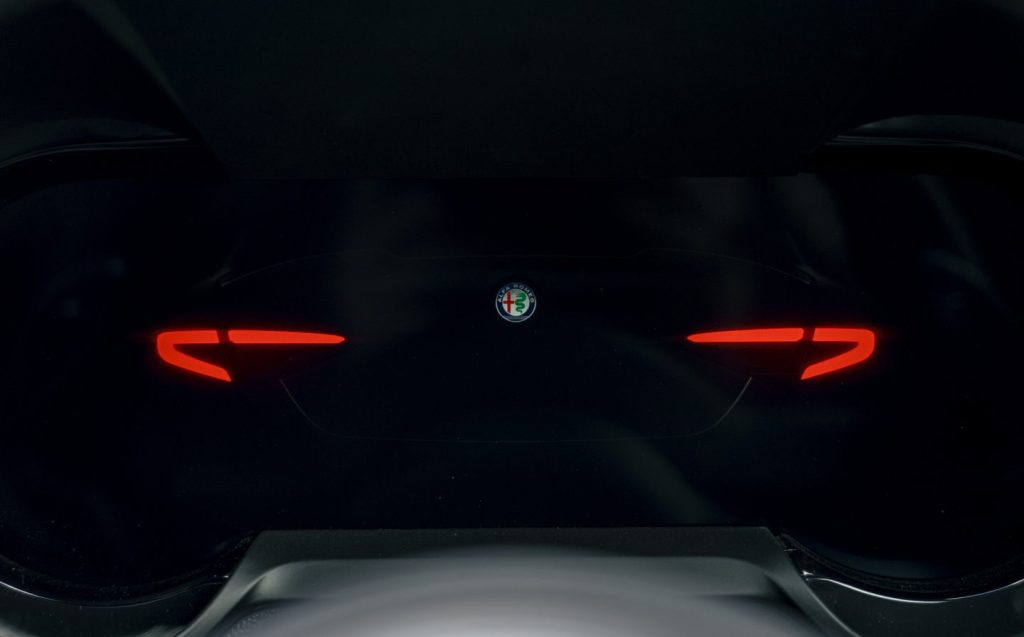
That said, it’s the touchscreen that’s the weak point in the Giulia’s tech offering. Although it’s fairly functional, it has cramped and difficult-to-read graphics that make it a challenge to navigate on the move, while the displays just feel a little bit underwhelming. For reasons unknown, Alfa chose not to fit the imperfect but much more competitive screen from the Tonale. Still, at least with Apple CarPlay and Android Auto fitted as standard, you can use those systems instead.
And that isn’t the only way Alfa has looked after customers. Every Giulia comes with adaptive cruise control that ensures a safe distance between you and the vehicle in front, while autonomous emergency braking is also on hand to stop or slow the car if the car detects a hazard to which the driver has not responded.
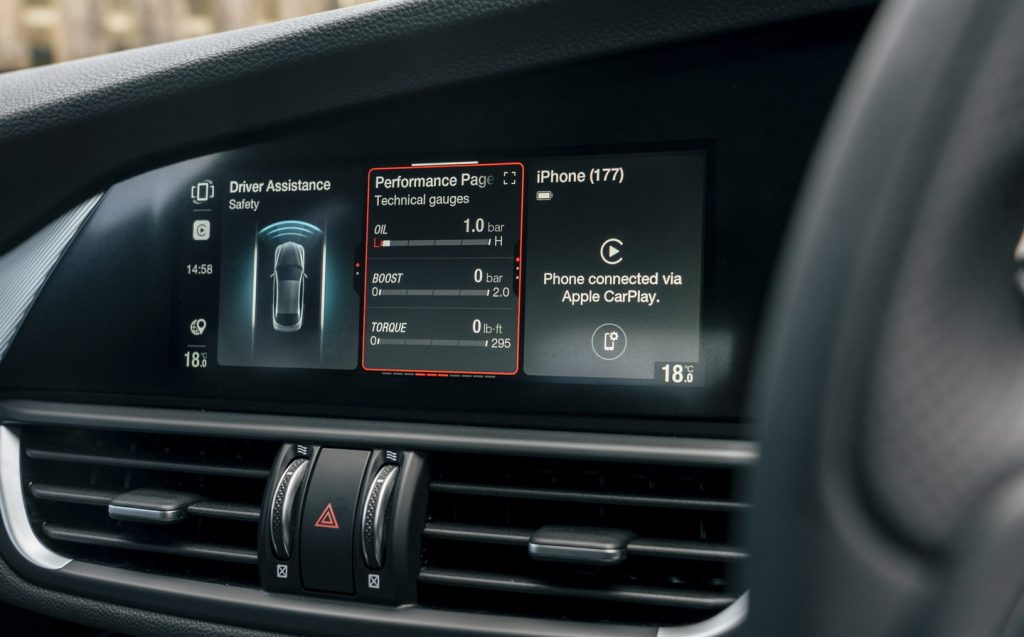
Those who want more safety tech can opt for the Driver Assistance Pack Plus, which includes blind-spot monitoring and lane keeping assistance, which can be used in conjunction with the cruise control to provide control of speed and lane positioning on the motorway. It’s a back-up system, rather than an autonomous driving system, but it’s a useful safety net in case the driver becomes distracted.
Performance, power output and acceleration
Although the Giulia used to be offered with a choice of petrol and diesel engines, the latest versions all come with the same 2-litre petrol power unit. With 276bhp, it’s pretty punchy, and all that power goes to the rear wheels via an eight-speed automatic gearbox. The gearbox is a bit of an unsung hero because it’s remarkably slick and well matched to the engine, and it responds quickly to commands from the shift paddles, but the focus will always be on the engine itself.
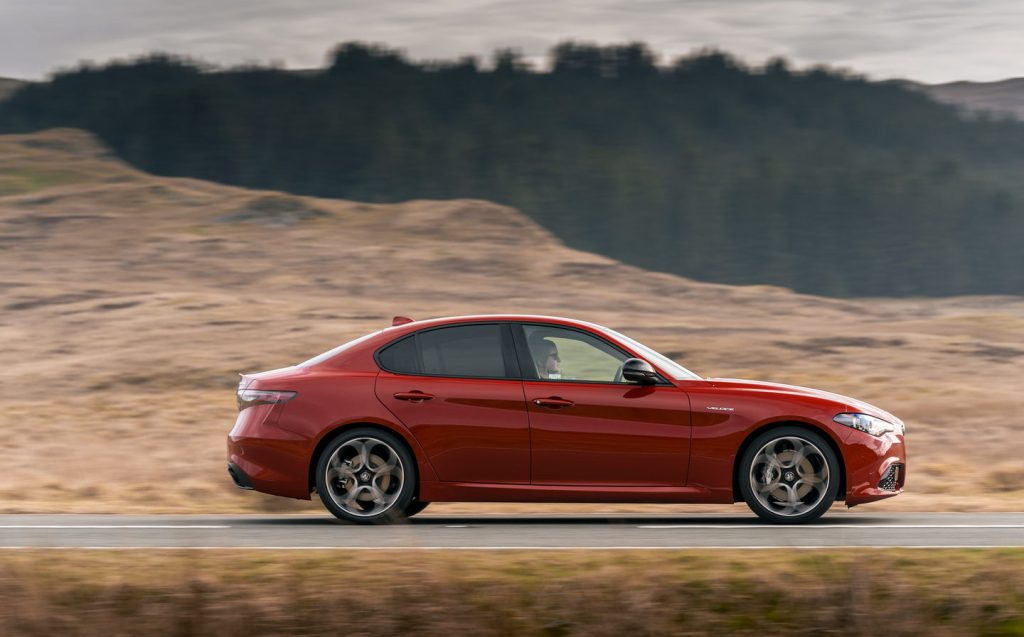
Fortunately, it stands up to scrutiny, offering plenty of punch. Stick it in its most aggressive setting, Dynamic, and it’ll take you from 0-62mph in less than six seconds, and at full chat you’ll see 149mph on the new instrument cluster.
And when you push the motor hard, it doesn’t complain too much. Where other four-cylinder engines might drone at higher speeds, the Alfa rewards you with more of a growl, albeit less exciting than the six-cylinder sound you get from a BMW M340i, or indeed the Quadrifoglio version of the Giulia.
What’s more, while the updated Alfa is more than fast enough, it’s reasonably efficient, with our Veloce-spec test car claiming almost 40mpg on the official economy test. That isn’t spectacular, but for something this powerful and devoid of hybrid assistance, it isn’t such bad going.
That said, company car drivers are going to prefer alternatives with hybrid power, if only for the tax benefits.
Ride and handling
If you’re expecting Alfa Romeo to have made massive changes to the Giulia’s suspension or handling, you’re going to be disappointed. Whereas Alfa has made slight changes to the exterior and interior, absolutely nothing has happened under the skin. Not that we’ve got too many complaints about that.
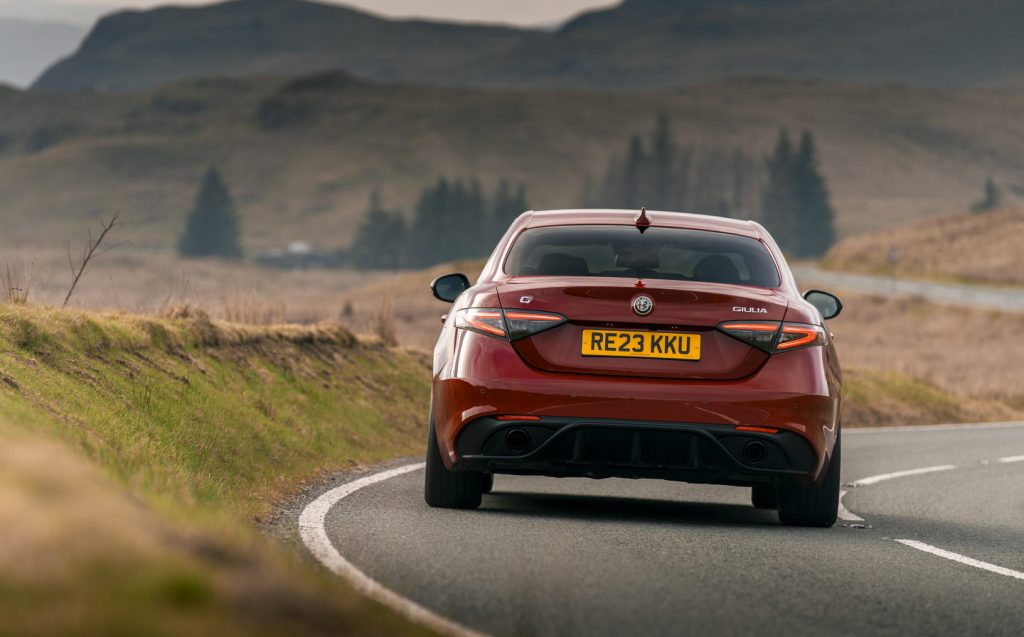
The Giulia has always been one of the best executive saloons to drive, with balance and agility that’s only really matched by the Jaguar XE and BMW 3 Series.
Admittedly, the steering is a little light and numb but there’s no arguing with the response it elicits. The Giulia snaps into corners beautifully, and when you’re there it will cling on for dear life, the tyres steadfastly refusing to give up as the body rolls gently and progressively, just to let you know which wheel is bearing the load. Only with provocation will it misbehave.
Normally, such fine-handling cars would come with a trade-off when it comes to ride comfort, and though the Giulia is far from the smoothest riding saloon on the market, it isn’t horribly uncomfortable either. Instead, you get this smartly judged level of damping that prevents bumps from jarring too much, but lets you know what the wheels are doing, offering great seat-of-the-pants feel when you’re pushing on a bit.
In short, it’s clearly set up for handling, but there’s nothing wrong with that, and the ride isn’t so firm that you’ll be wishing you had a Mercedes instead.
Of course, this ‘cooking’ version of the Giulia isn’t built to be the last word in sportiness – the Quadrifoglio is there for that – but the basics are much the same, so it’s still pretty spectacular.
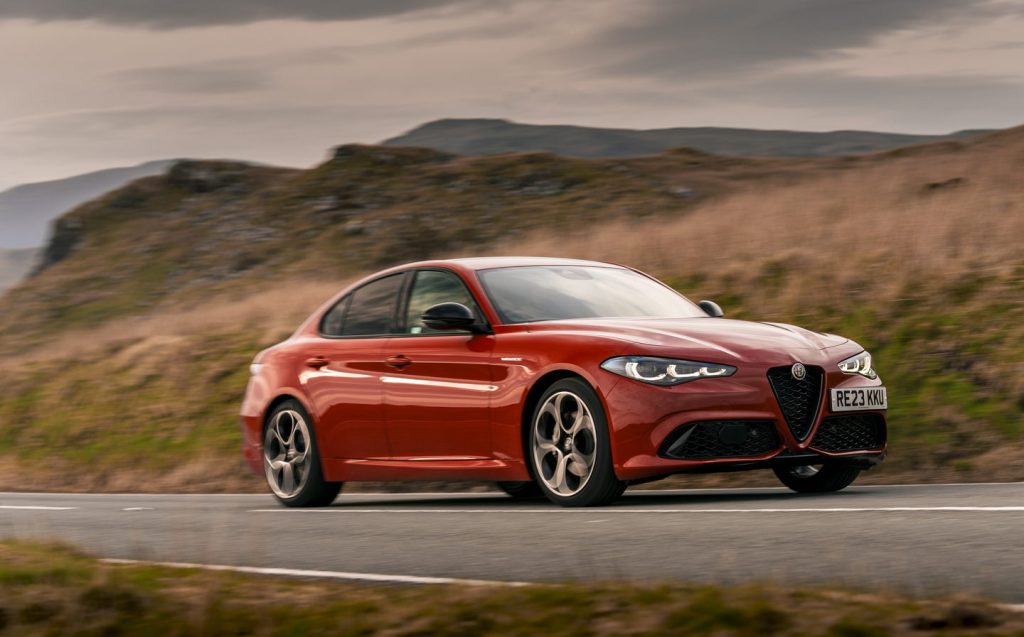
Pricing and on-sale date
The cheapest Giulia is the Sprint model, which comes in at just over £43,000. That sounds like quite a lot of money, particularly when the cheapest 3 Series costs less than £40,000.
However, the Giulia is only available with that punchy 276bhp engine, so a more closely matched rival would be the Mercedes-Benz C 200, which has a £45,000 asking price.
In essence, then, the Giulia is more competitively priced than it sounds, and standard equipment is relatively generous. Sprint models come with 18in alloy wheels, aluminium sports pedals and cloth seats with faux leather panels. Navigation, wireless phone charging and the Apple CarPlay and Android Auto smartphone tech are all included as standard, too.
Verdict: Alfa Romeo Giulia review
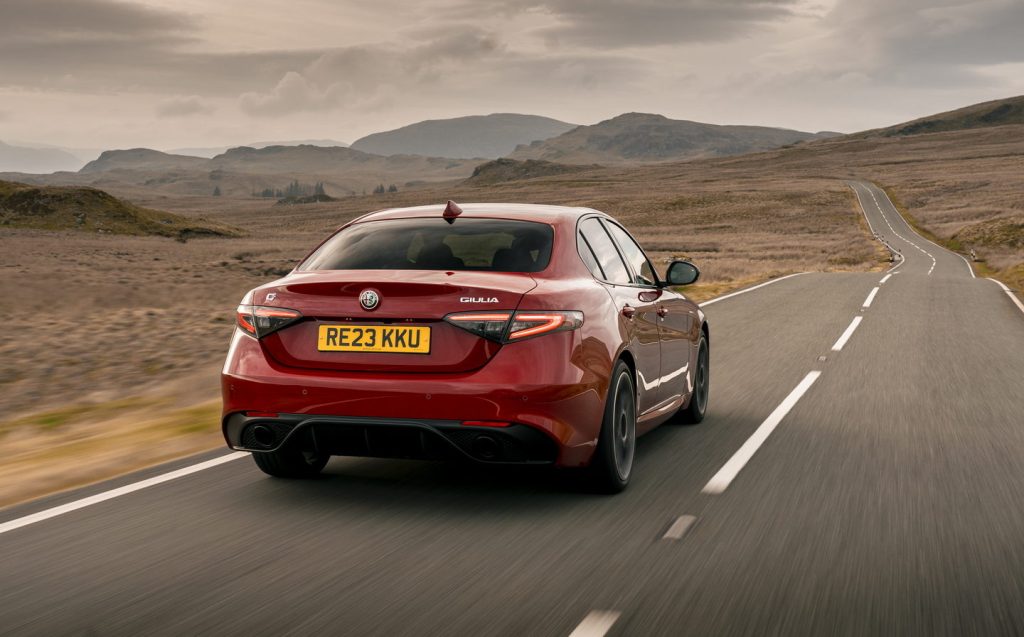
Alfa Romeo’s changes to the Giulia might be described as minimal at best, but they have made a small difference. We wouldn’t go complaining to the dealer if we’d just taken delivery of a pre-facelift car – the improvement is only minor – but there is an improvement, nonetheless.
But while the Giulia may be better than before, and it remains one of the best cars to drive in this class, it still doesn’t quite have the all-round quality to match the likes of the BMW 3 Series and the Mercedes-Benz C-Class. They’re just that bit more polished.
Related articles
- After reading our review of the updated Alfa Romeo Giulia, you might like to read a profile of ‘Quadrifoglio’ – Alfa Romeo’s sporty sub-brand
- You might also like to read all about the Maserati MC20 supercar
- Or read our review of the Alfa Romeo Tonale PHEV
Latest articles
- F1 2025 calendar and race reports: The new Formula One season as it happens
- Seven great automotive events to visit this summer, from F1 to art and champagne
- Watch new Porsche 911 GT3 smash Nürburgring record for manual cars
- Skoda Elroq 2025 review: Czech carmaker can’t seem to miss with its electric family cars
- Five best electric cars to buy in 2025
- Should I buy a diesel car in 2025?
- Zeekr 7X AWD 2025 review: A fast, spacious and high tech premium SUV — but someone call the chassis chief
- Denza Z9GT 2025 review: Flawed but sleek 1,062bhp shooting brake from BYD’s luxury arm
- Extended test: 2024 Renault Scenic E-Tech review


